More Visiting And Exploring (Page Two)
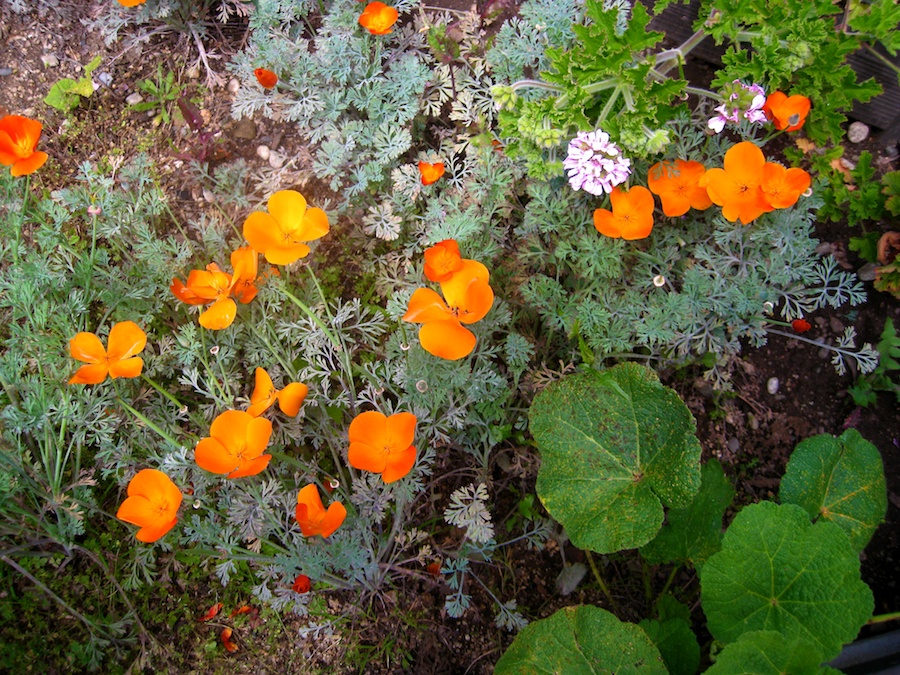
The poppies were everywhere
Did You Know? - Poppies have long been used as a symbol of sleep, peace, and death: sleep because of the opium extracted from them, and death because of the common blood-red color of the red poppy in particular. In Greek and Roman myths, poppies were used as offerings to the dead.
Poppies used as emblems on tombstones symbolize eternal sleep. This symbolism was evoked in the children's novel The Wonderful Wizard of Oz, in which a magical poppy field threatened to make the protagonists sleep forever
A second interpretation of poppies in Classical mythology is that the bright scarlet colour signifies a promise of resurrection after death.
The poppy of wartime remembrance is Papaver rhoeas, the red-flowered corn poppy. This poppy is a common weed in Europe and is found in many locations, including Flanders, the setting of the famous poem "In Flanders Fields," by the Canadian surgeon and soldier John McCrae.

Pete and Sue explore the gardens

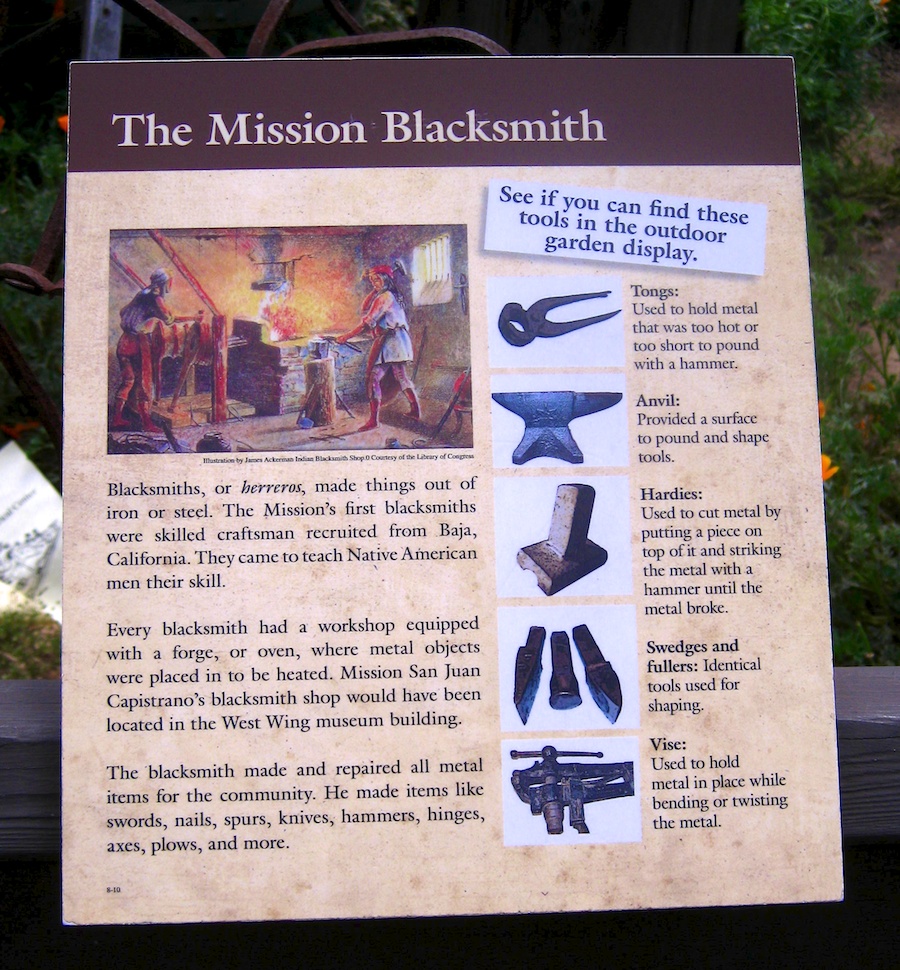
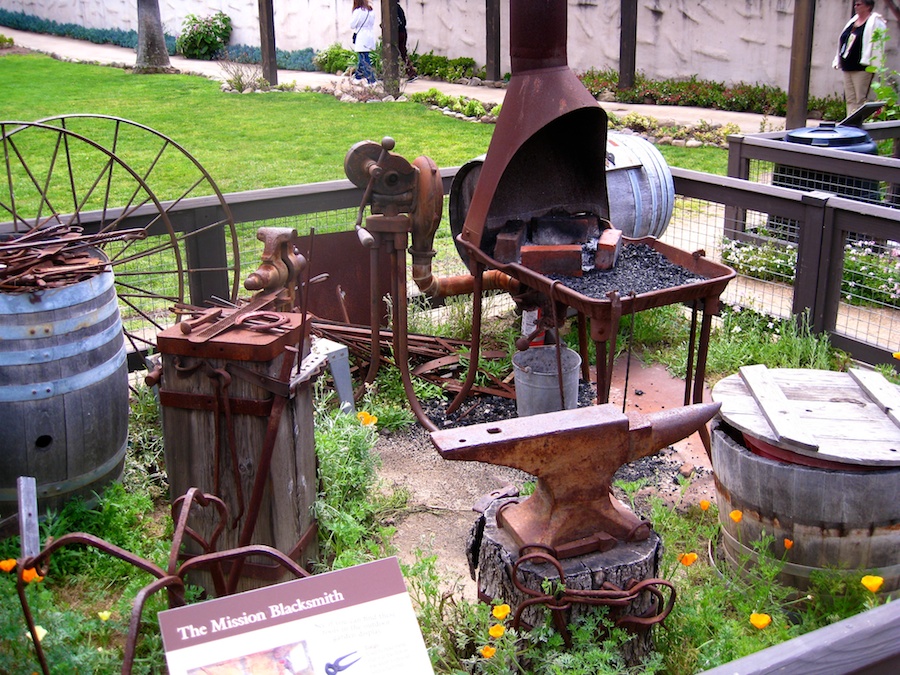
Did You Know? - Blacksmiths work primarily with wrought iron and steel. The "black" in "blacksmith" refers to the black fire scale, a layer of oxides that forms on the surface of the metal during heating. The word "smith" derives from an old word, "smite" (to hit). Thus, a blacksmith is a person who hits black metal.
Blacksmiths work by heating pieces of wrought iron or steel, until the metal becomes soft enough to be shaped with hand tools, such as a hammer, anvil and chisel. Heating is accomplished by the use of a forge fueled by propane, natural gas, coal, charcoal, coke or oil.
Some modern blacksmiths may also employ an oxyacetylene or similar blowtorch for more localized heating. Induction heating methods are gaining popularity among modern blacksmiths.
Color is important for indicating the temperature and workability of the metal: As iron is heated to increasing temperatures, it first glows red, then orange, yellow, and finally white. The ideal heat for most forging is the bright yellow-orange color appropriately known as a "forging heat". Because they must be able to see the glowing color of the metal, some blacksmiths work in dim, low-light conditions. Most work in well-lit conditions. The key is to have consistent lighting which is not too bright. Direct sunlight obscures the colors.
The techniques of smithing may be roughly divided into forging (sometimes called "sculpting"), welding, heat treating, and finishing.
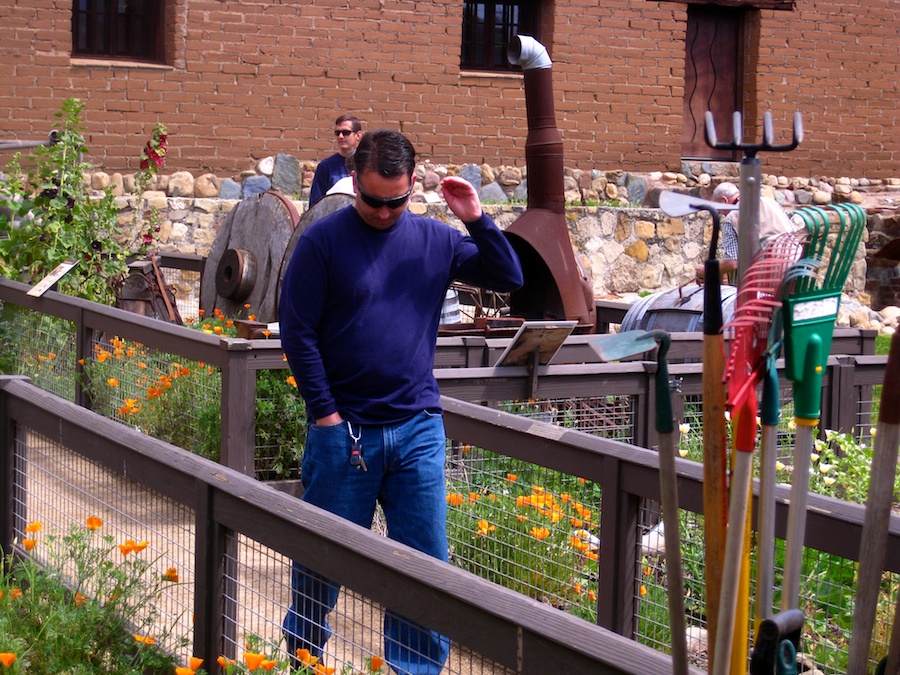
Big Marine running from a little bee
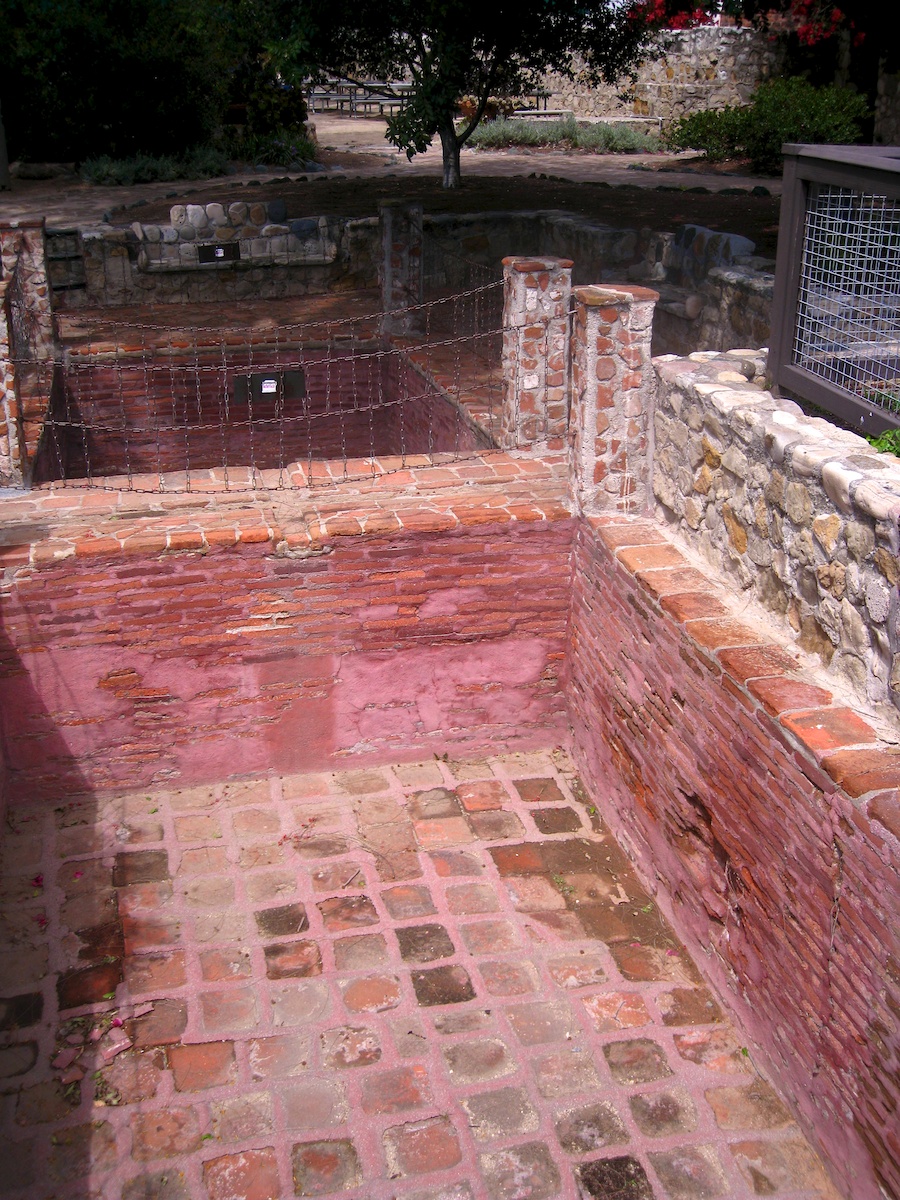
The hides of animals were processed in these vats
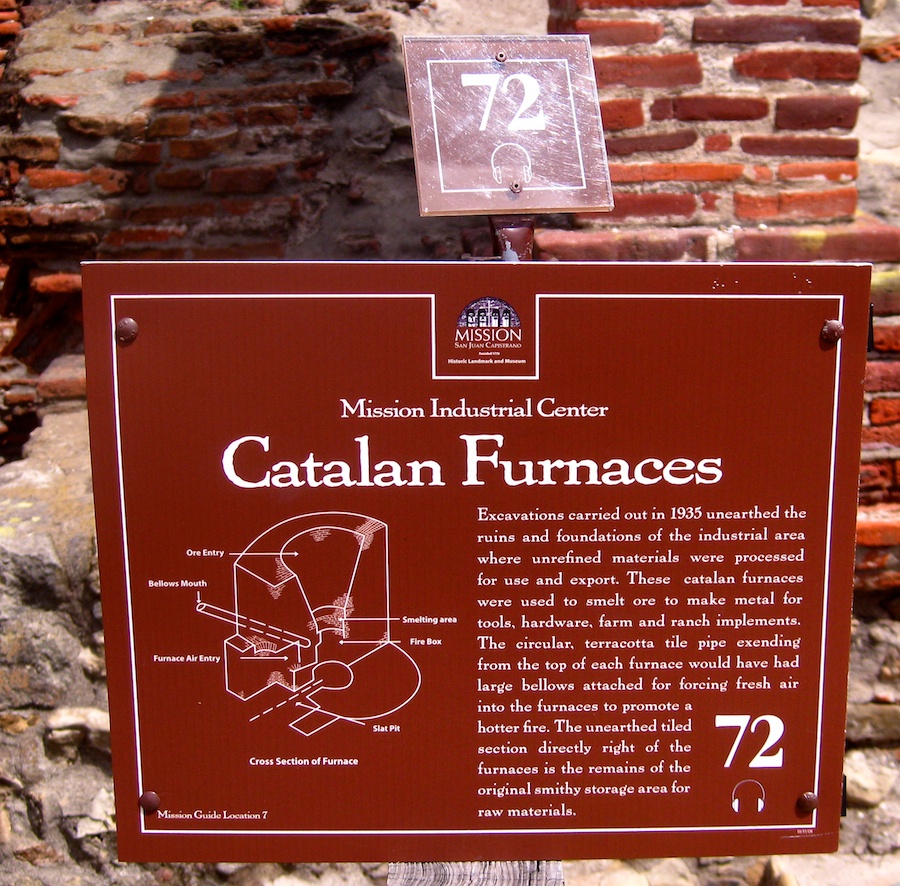
Amazing fine only 70+ years ago
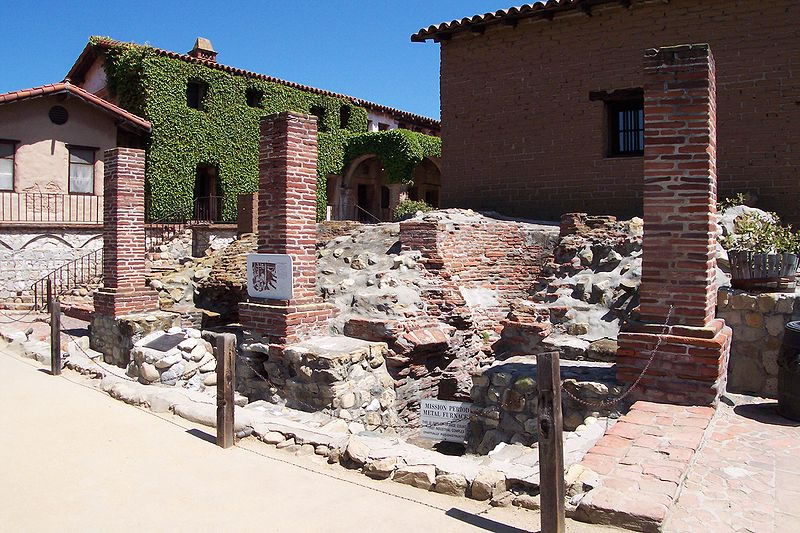
Did You Know? -A bloomery is a type of furnace once widely used for smelting iron from its oxides. The bloomery was the earliest form of smelter capable of smelting iron. A bloomery's product is a porous mass of iron and slag called a bloom. This mix of slag and iron in the bloom is termed sponge iron, which is usually consolidated (shingled) and further forged into wrought iron. The bloomery has now largely been superseded by the blast furnace, which produces pig iron.
In the Spanish colonization of the Americas, bloomeries or "Catalan forges" were part of 'self sufficiency' at some of the missions, encomiendas, and pueblos. As part of the Franciscan Spanish missions in Alta California, the "Catalan forges" at Mission San Juan Capistrano from the 1790s are the oldest existing facilities of their kind in the present day state of California. The bloomeries' sign proclaims the site as being "...part of Orange County's first industrial complex."
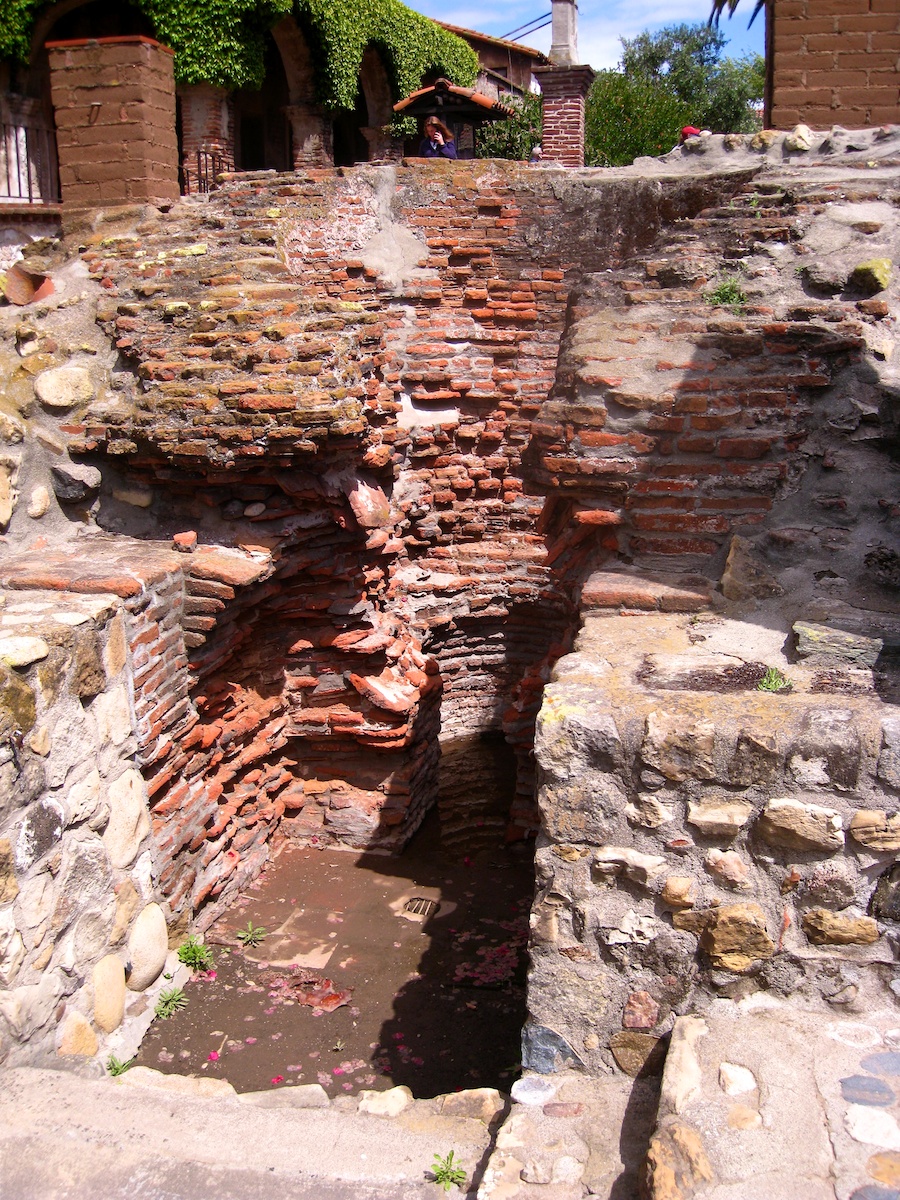
Slag melted and dropped into the pit
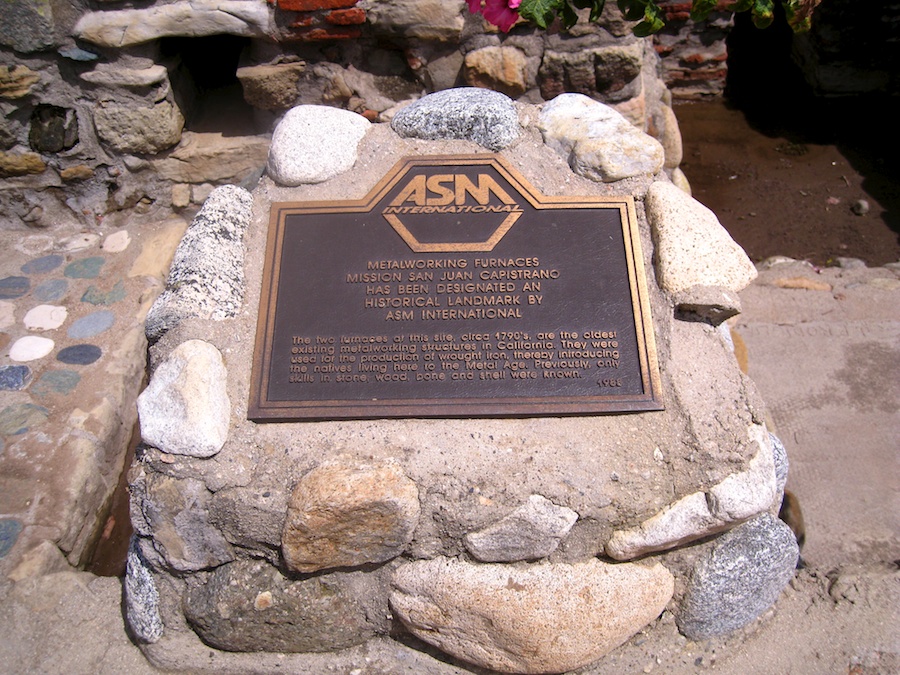
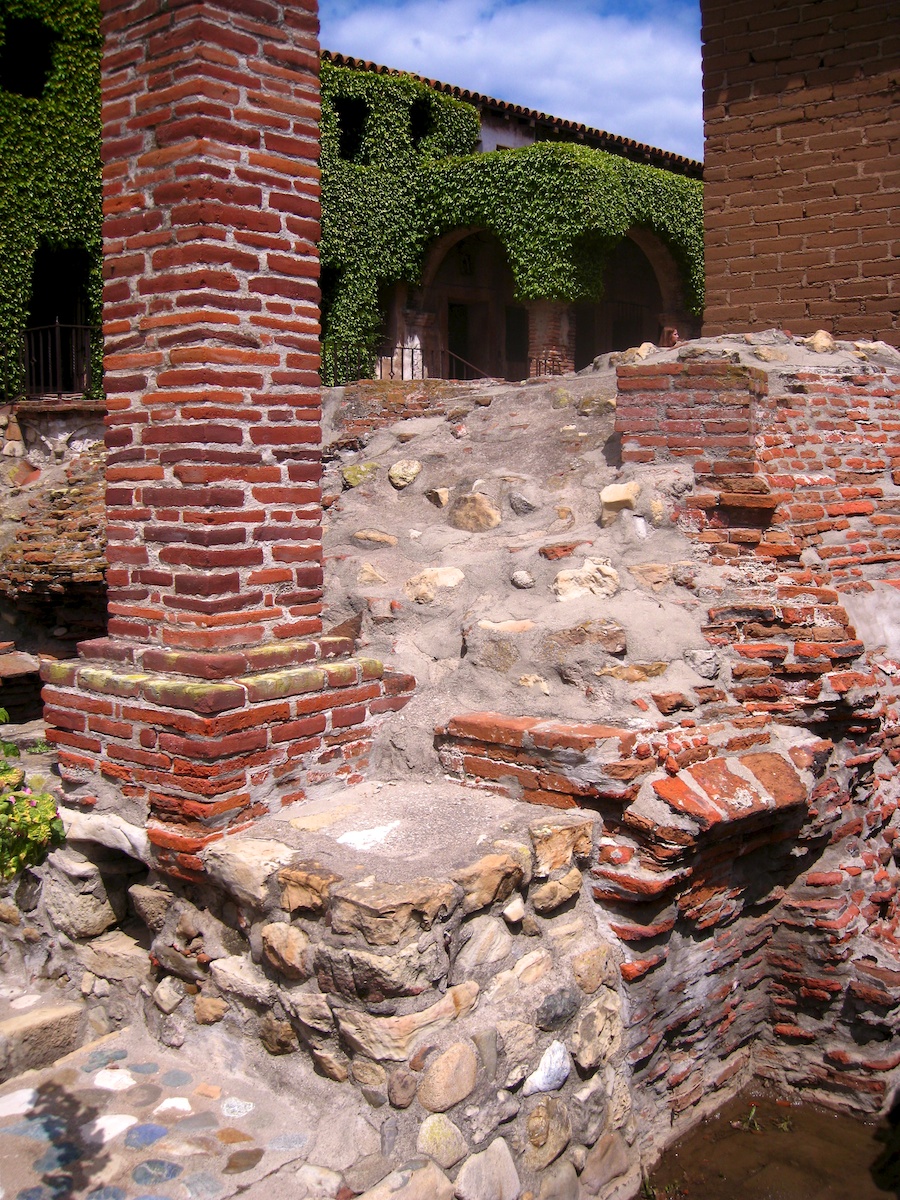
Hidden until 1935....
To The Patio....
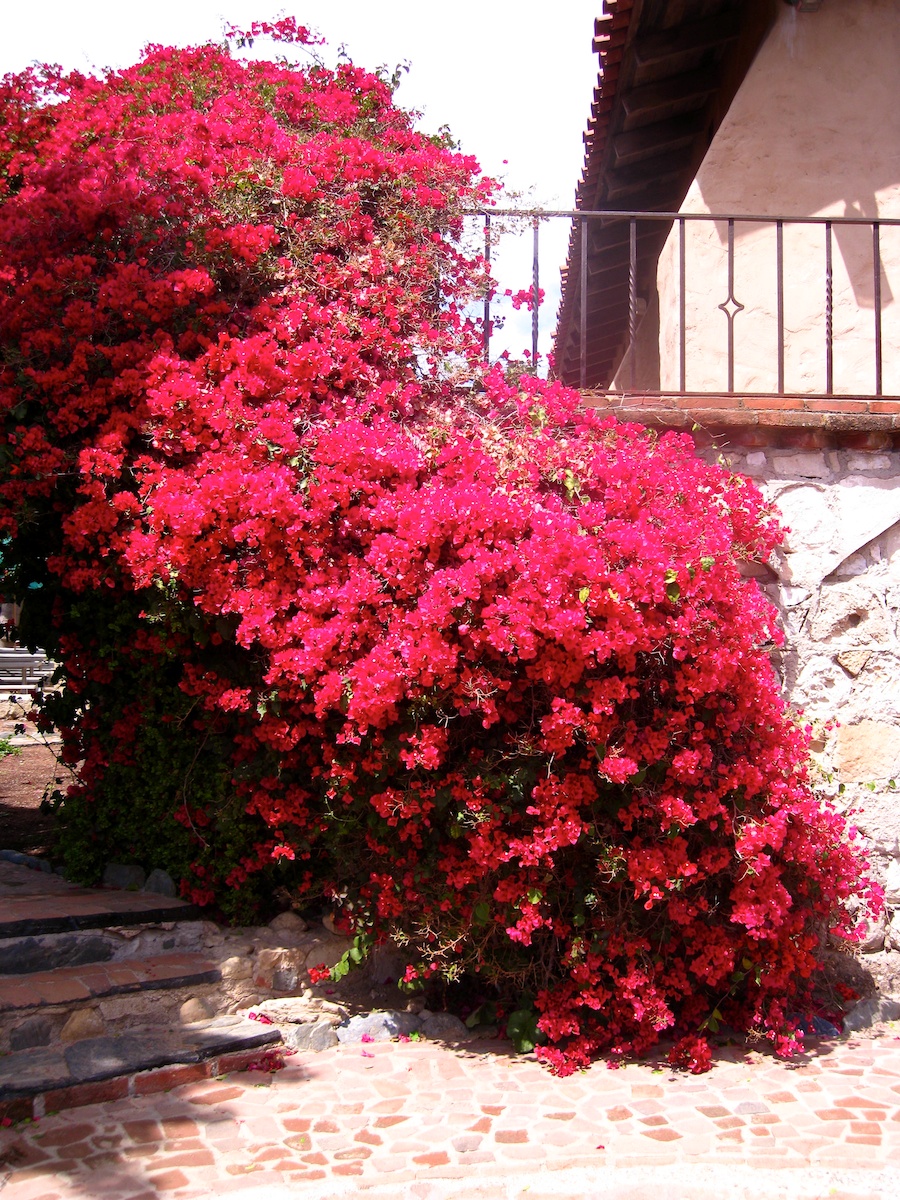
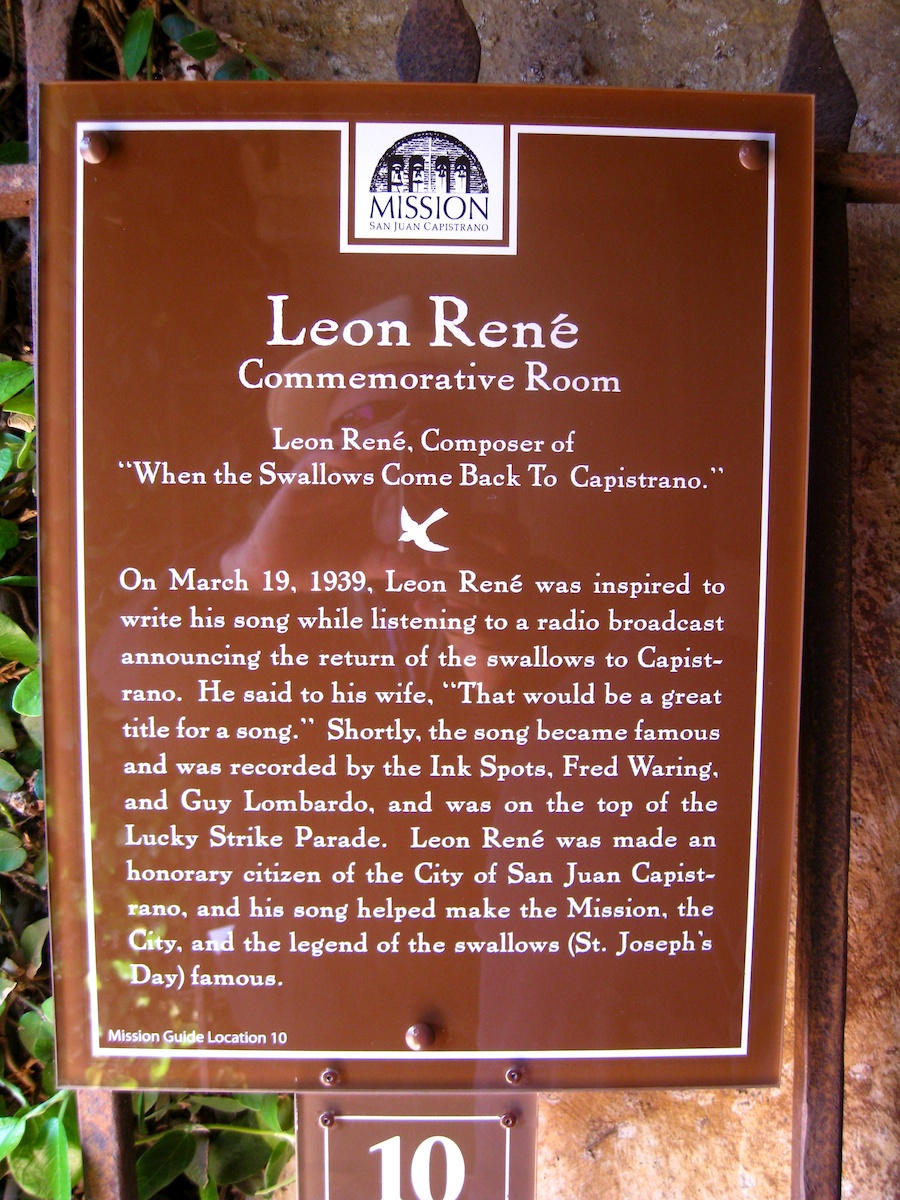
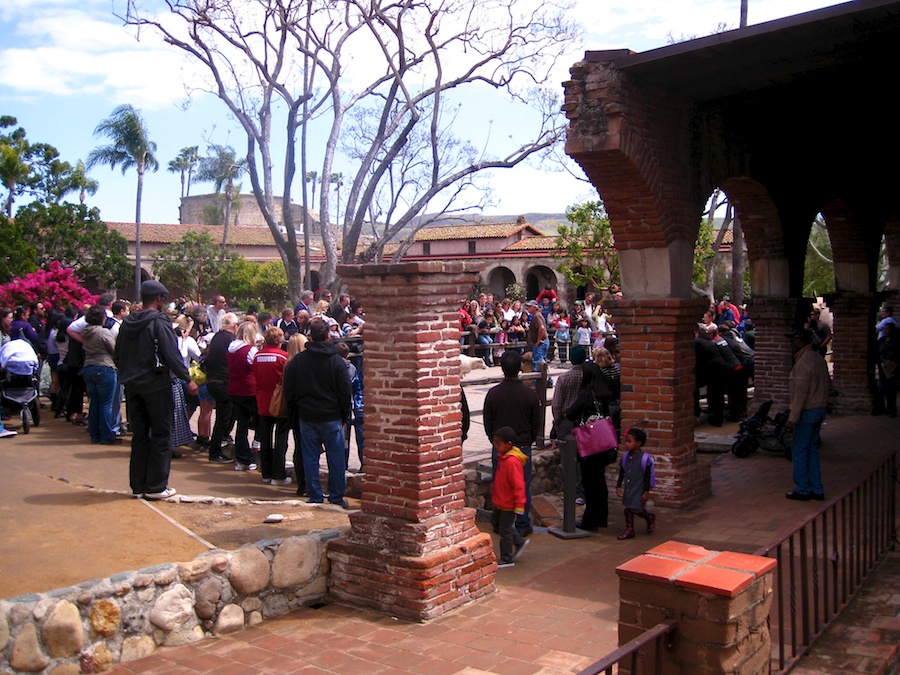
Some sheep shearing underway
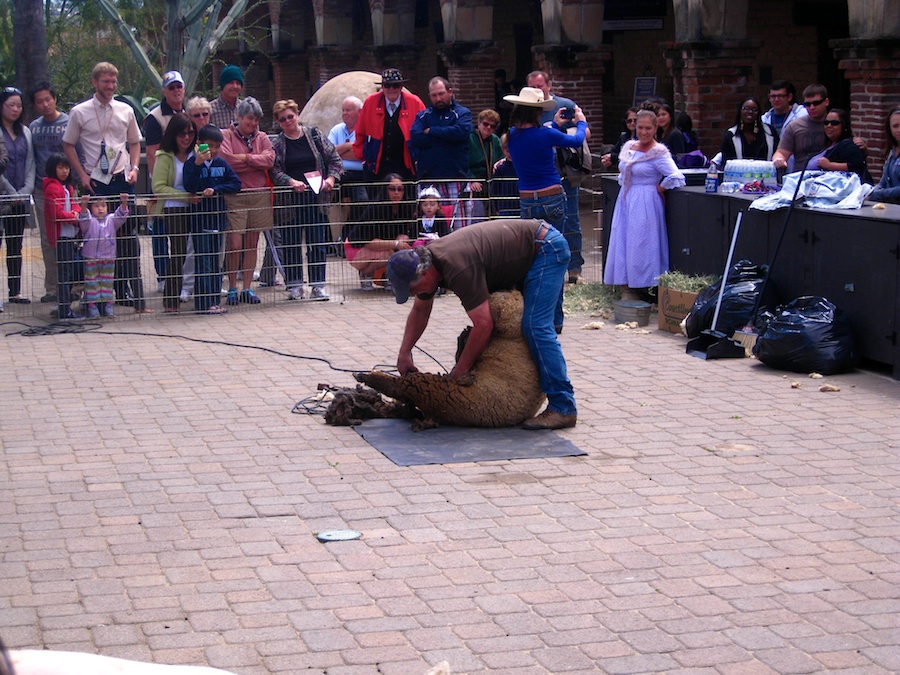
Doing this by hand must have been difficult at best
Did You Know? - Sheep shearing, shearing or clipping is the process by which the woollen fleece of a sheep is cut off. The person who removes the sheep's wool is called a shearer. Typically each adult sheep is shorn once each year (a sheep may be said to have been "shorn" or "sheared", depending upon dialect). The annual shearing most often occurs in a shearing shed, a facility especially designed to process often hundreds and sometimes more than 3,000 sheep per day.
Wild sheep were more hairy than woolly. Although sheep were domesticated nine to eleven thousand years ago, archaeological evidence from statuary found at sites in Iran suggests that selection for woolly sheep may have begun around 6000 BC, with the earliest woven wool garments having only been dated to two to three thousand years later. Woolly-sheep were introduced into Europe from the Near East in the early part of the 4th millennium BC. The oldest known European wool textile, ca. 1500 BC, was preserved in a Danish bog.
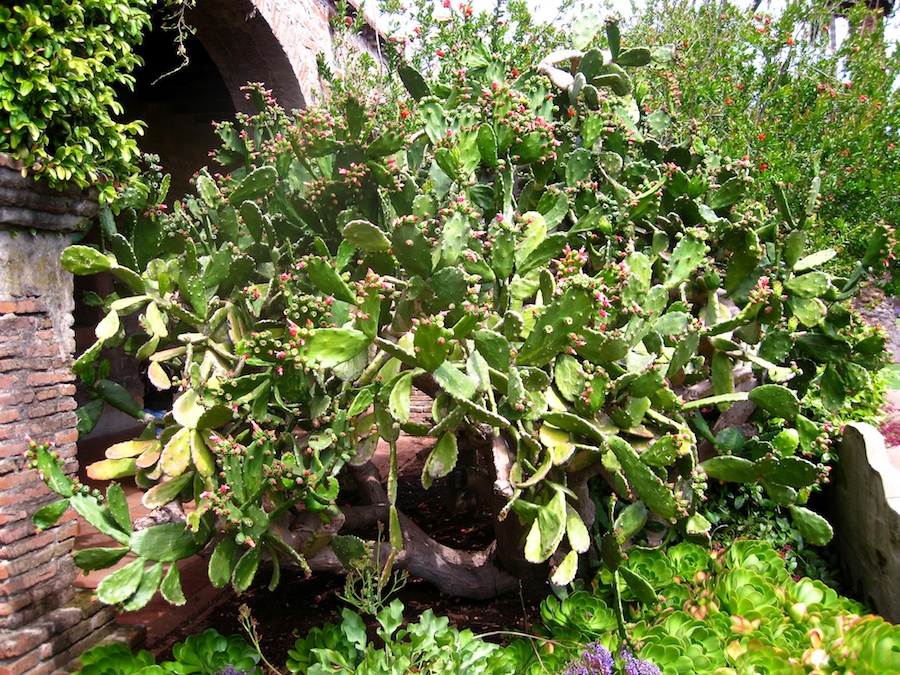
The cactus was in bloom
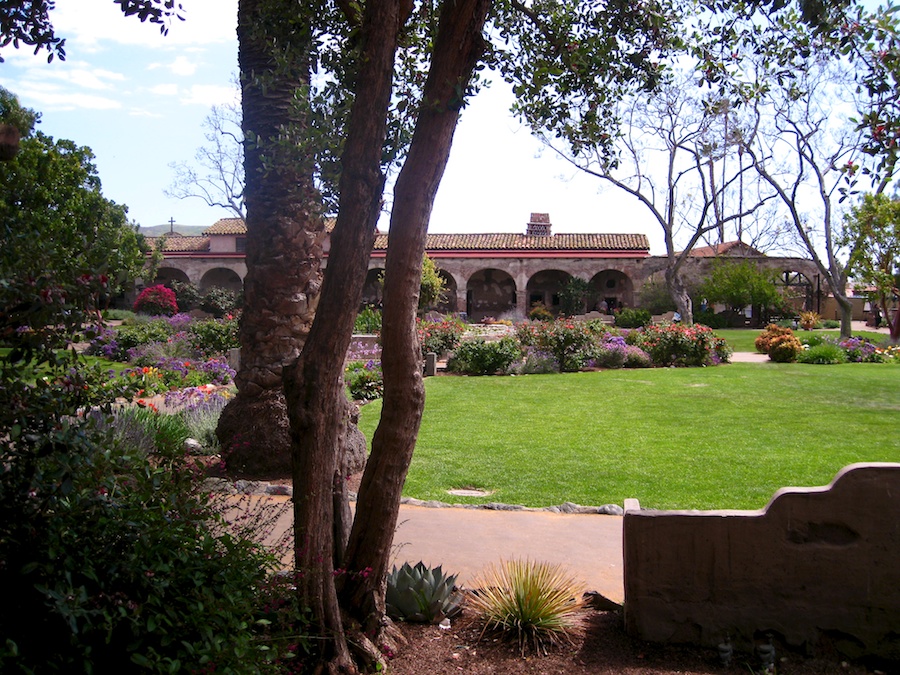
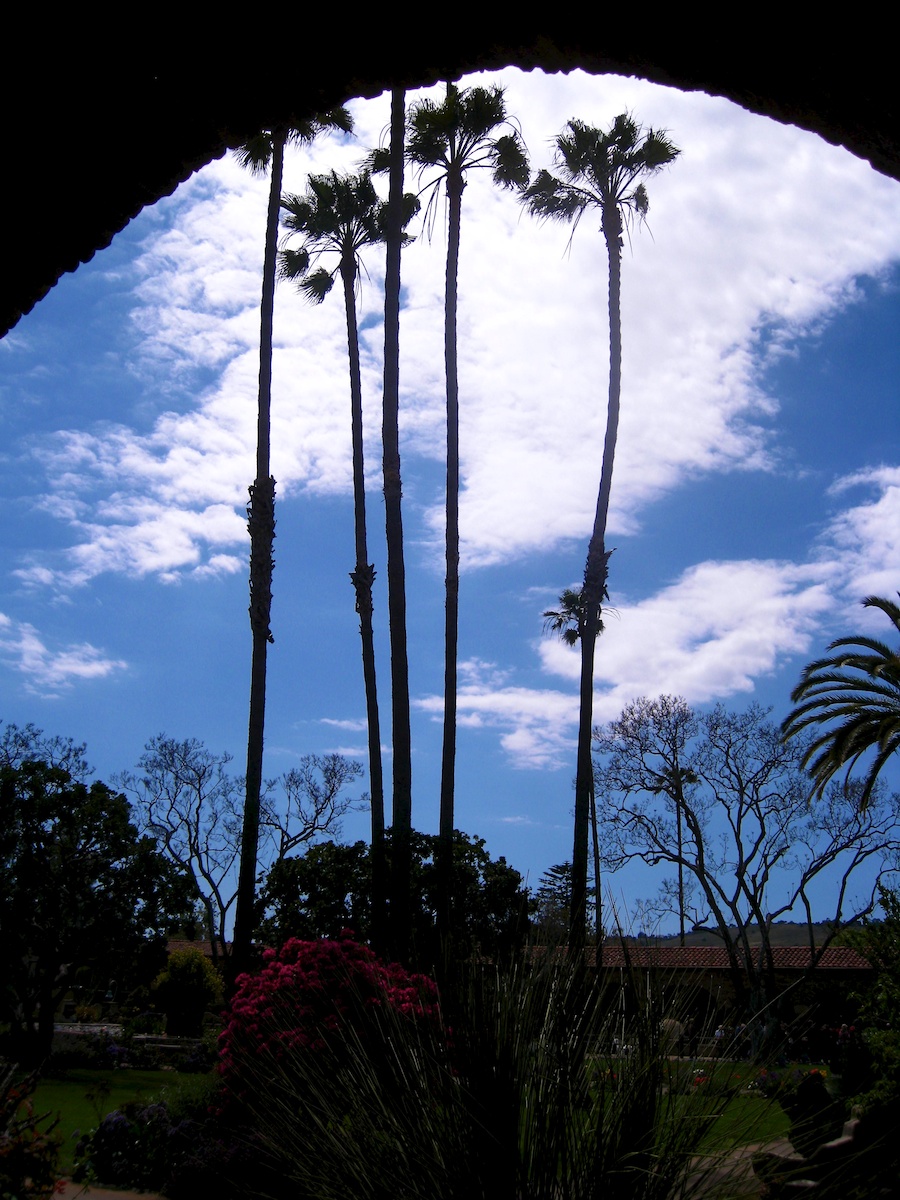
Beautiful skies today thanks to the recent rains
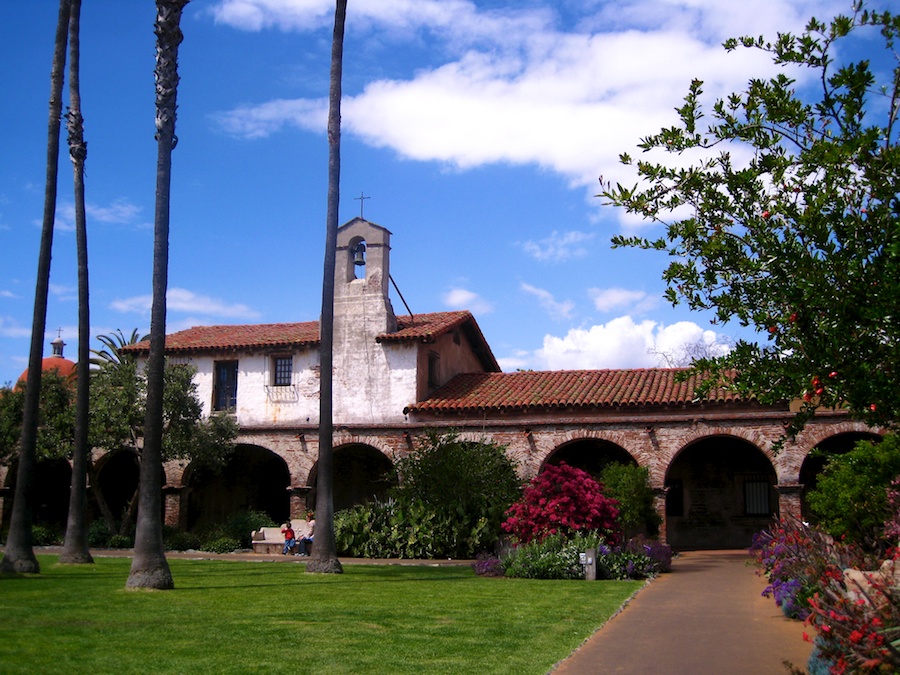
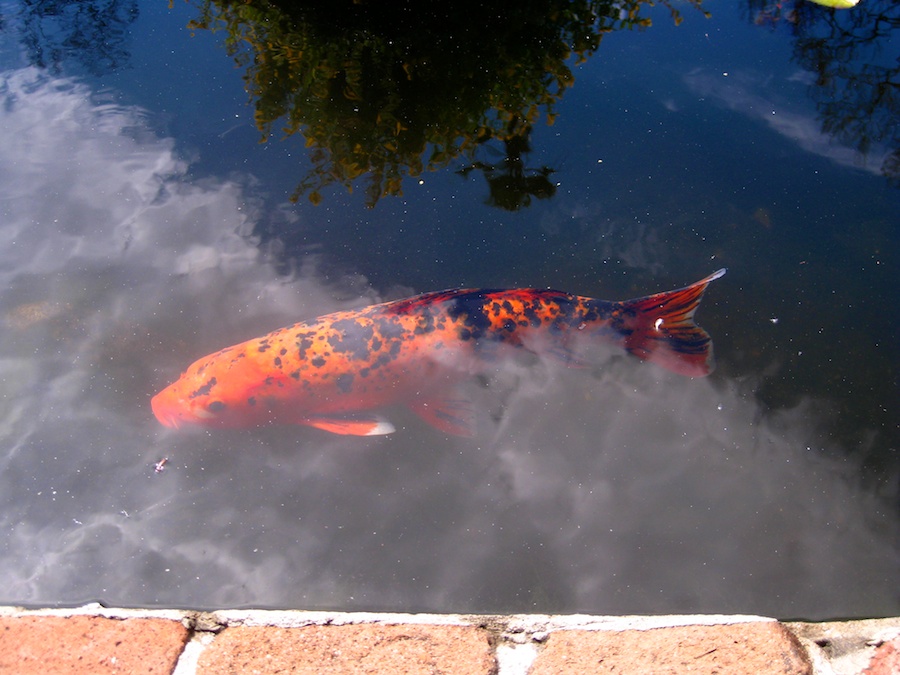
The ponds were full to the brim
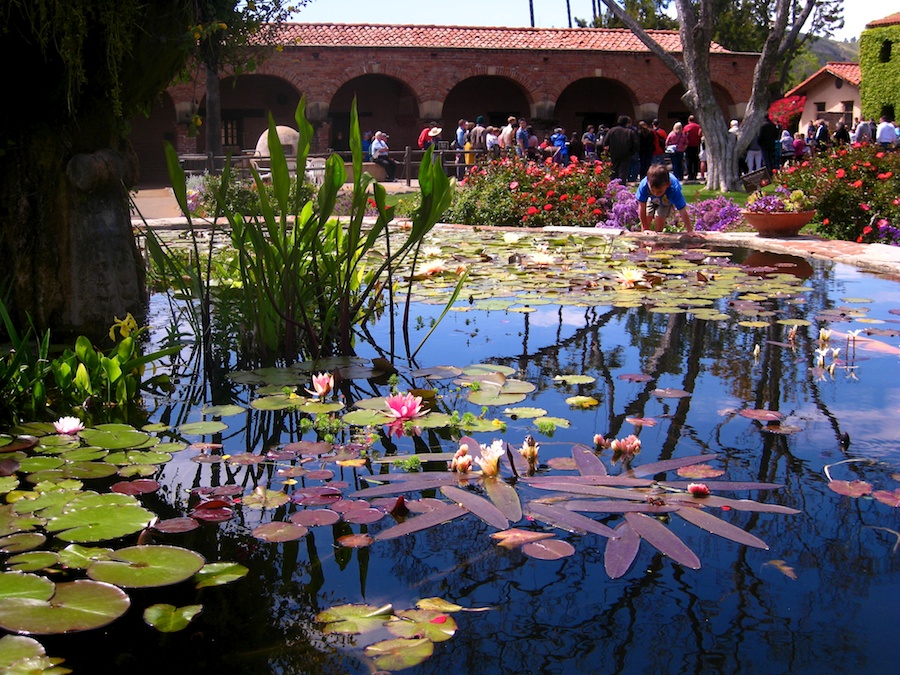
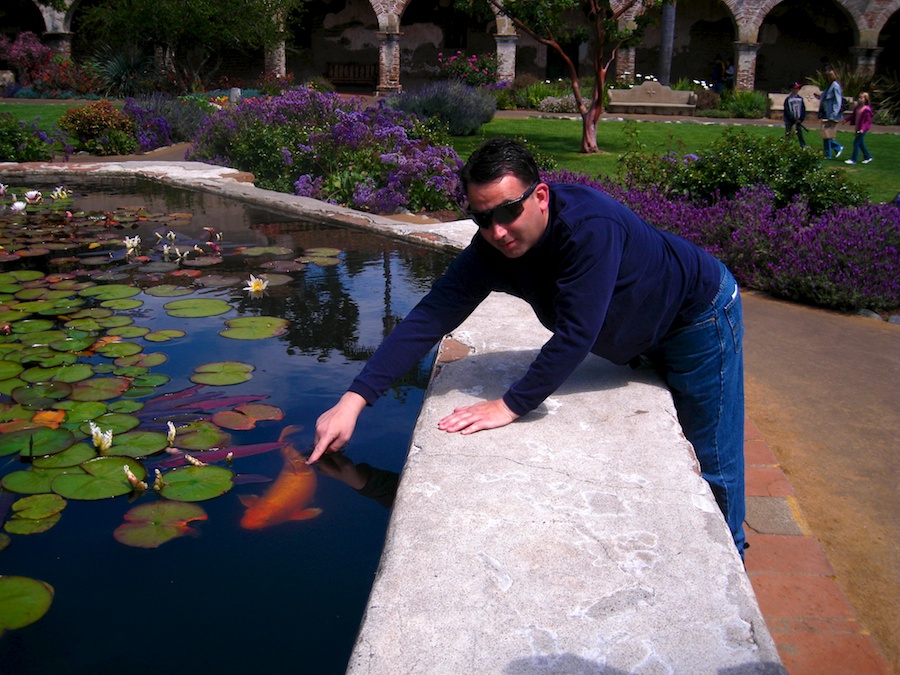
Pete found a friend
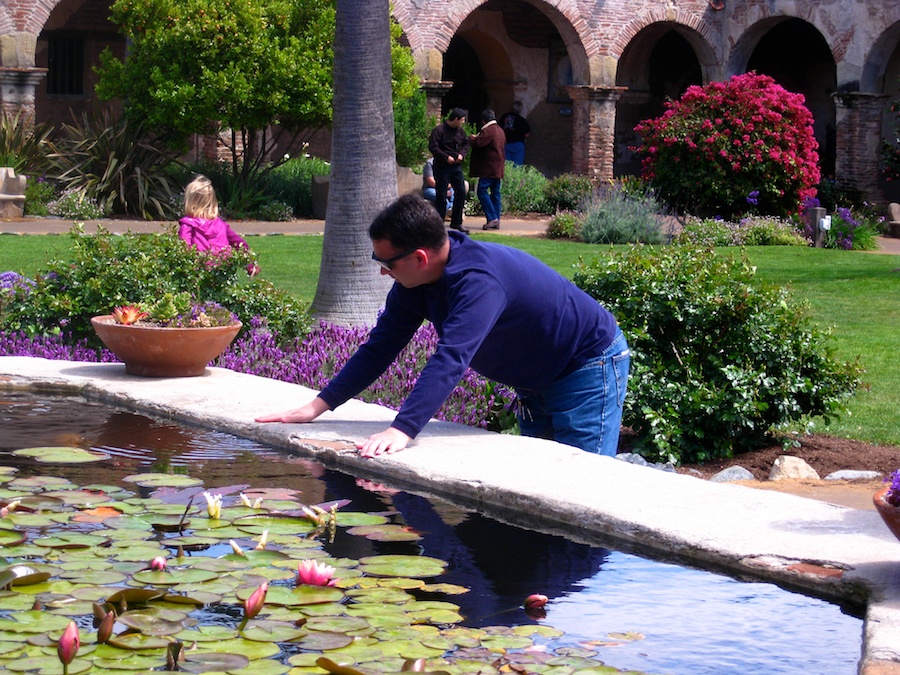
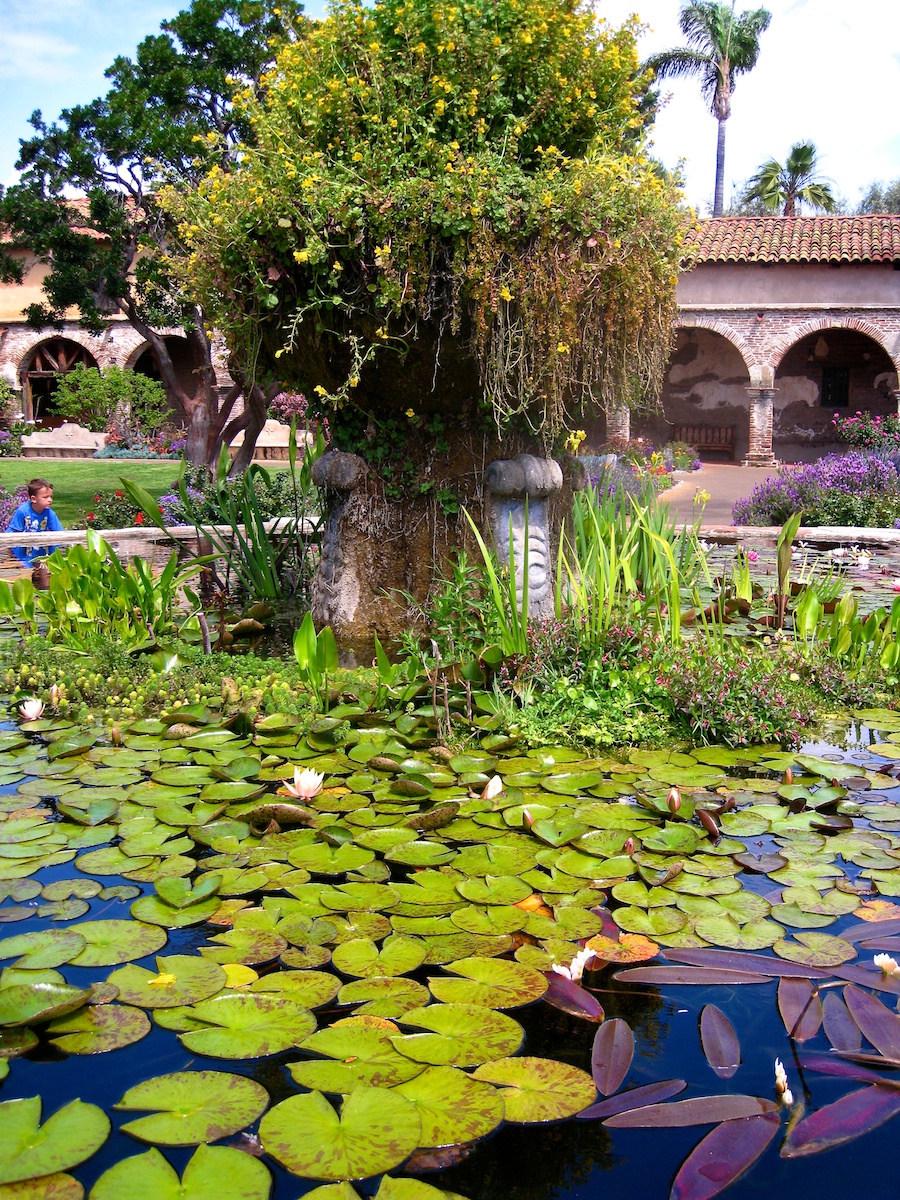
We were looking for the frogs
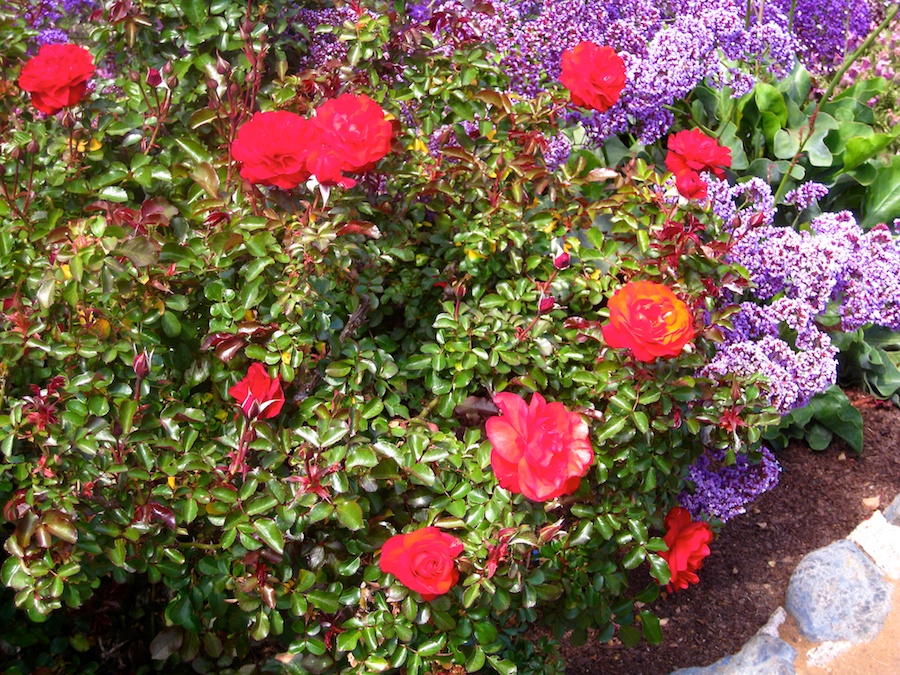
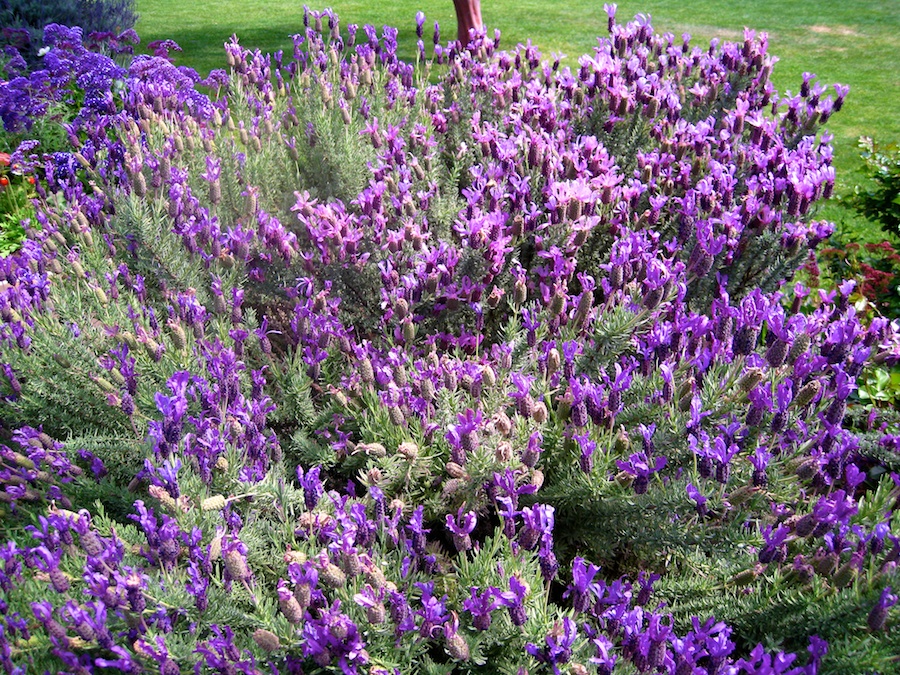
Purple beauties
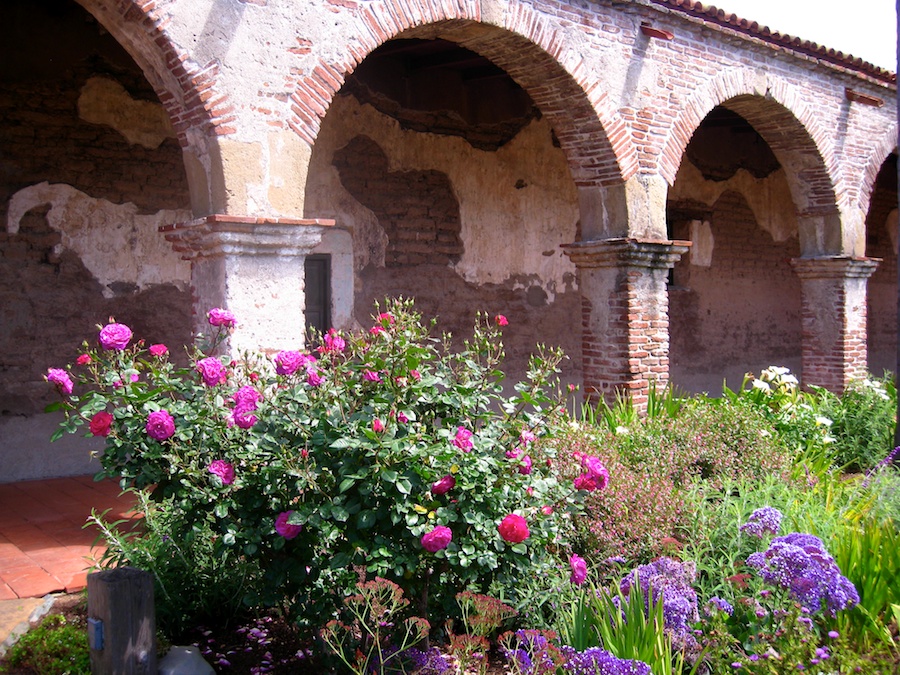
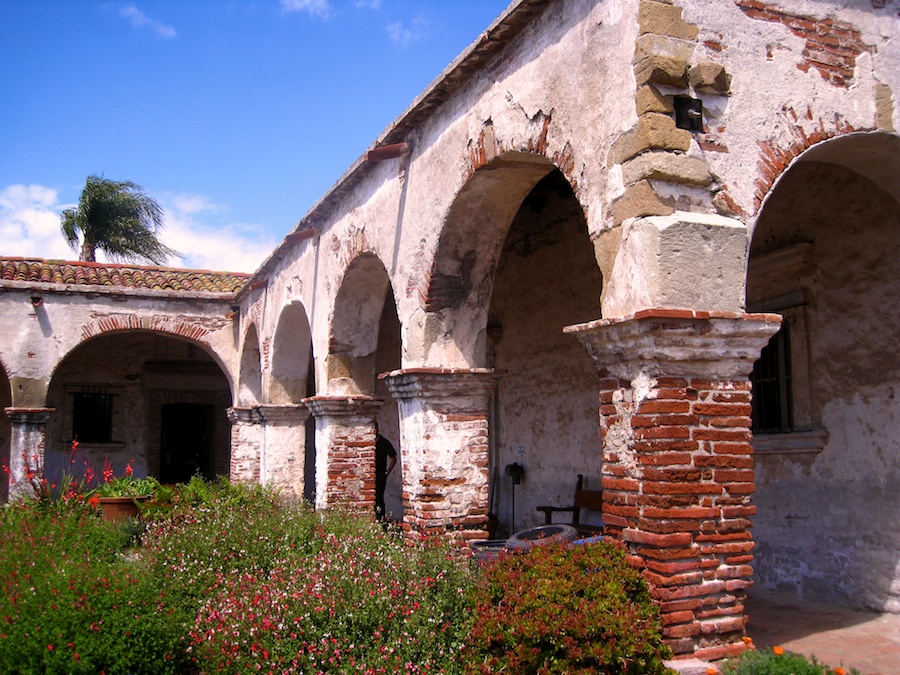
To the old stone church
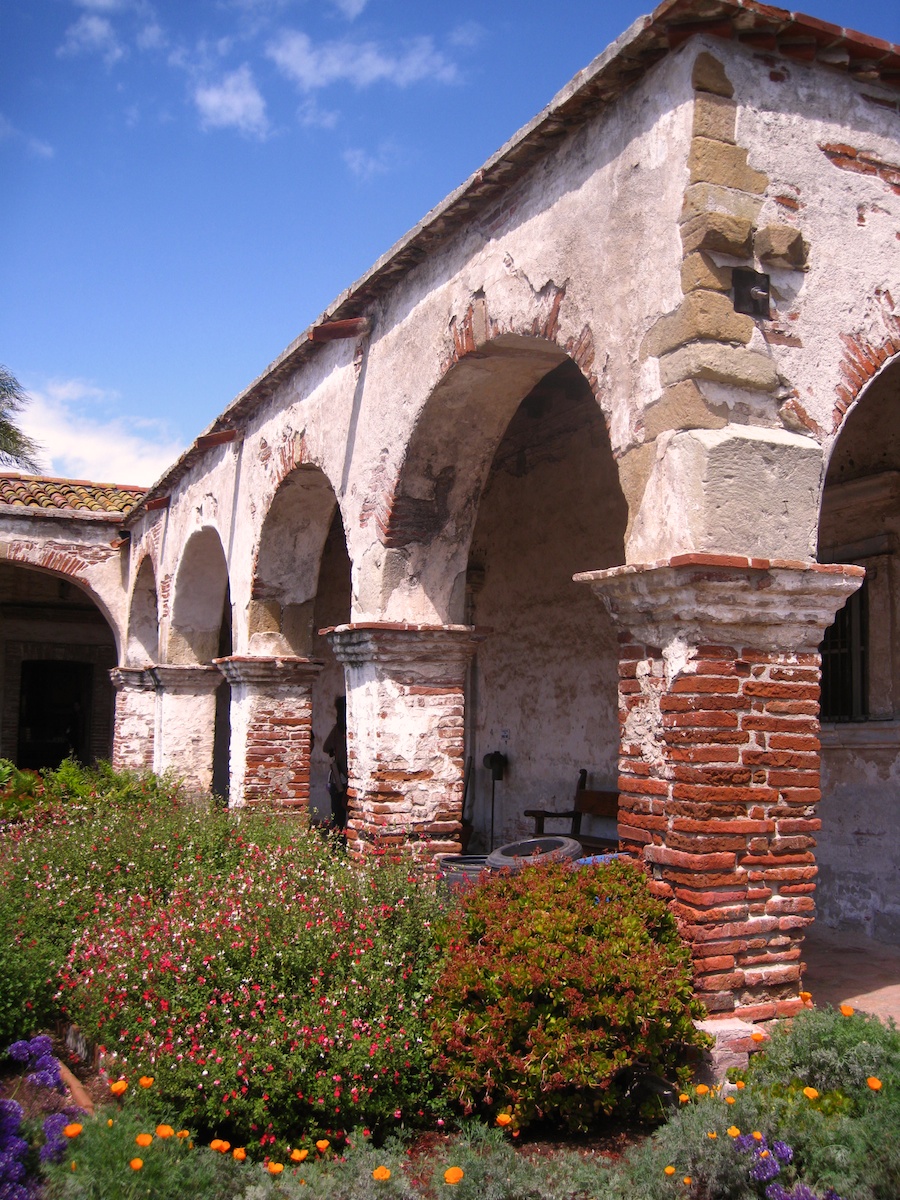
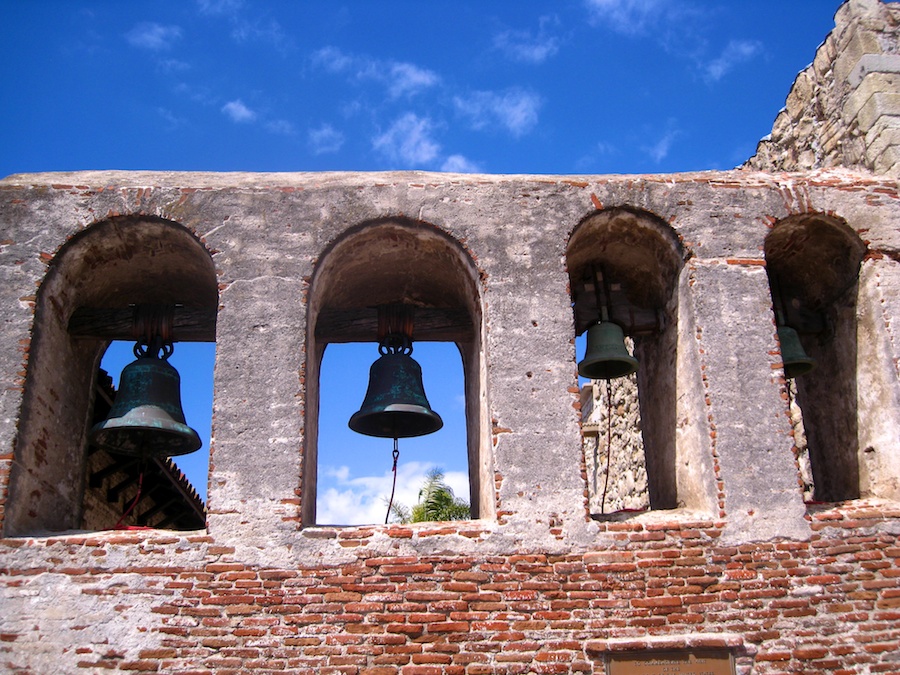
The bells have names
Did You Know? - Bells were vitally important to daily life at any mission. The bells were rung at mealtimes, to call the Mission residents to work and to religious services, during births and funerals, to signal the approach of a ship or returning missionary, and at other times; novices were instructed in the intricate rituals associated with the ringing the mission bells. The original bells were hung from a large nearby tree for some fifteen years, until the chapel bell tower was completed in 1791. What ultimately became of the original bells is not known. New bells were cast in Chile for inclusion in the belfry of "The Great Stone Church." All four of Mission San Juan Capistrano's bells are named and all bear inscriptions as follows (from the largest to the smallest; inscriptions are translated from Latin
- "Praised by Jesus , San Vicente. In honor of the Reverend Fathers, Ministers (of the Mission) Fray Vicente Fustér, and Fray Juan Santiago, 1796."
- "Hail Mary most pure. Ruelas made me, and I am called San Juan, 1796."
- "Hail Mary most pure, San Antonio, 1804."
- "Hail Mary most pure, San Rafael, 1804."
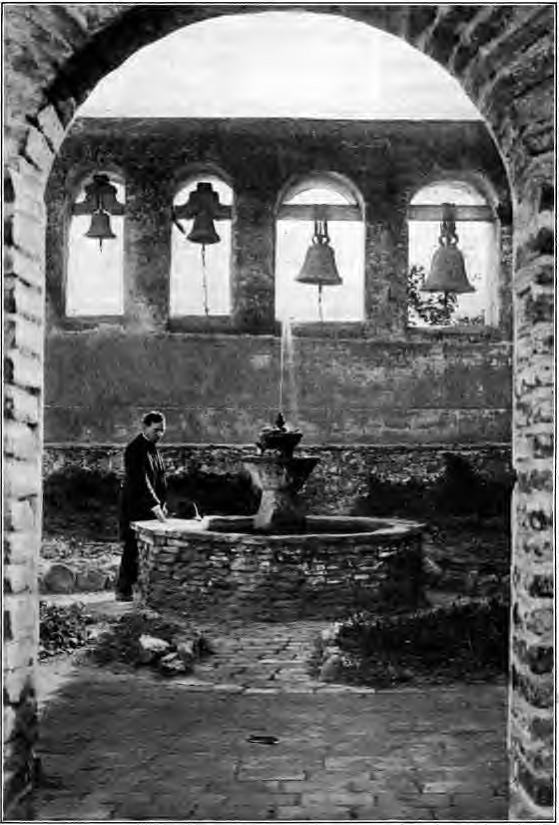
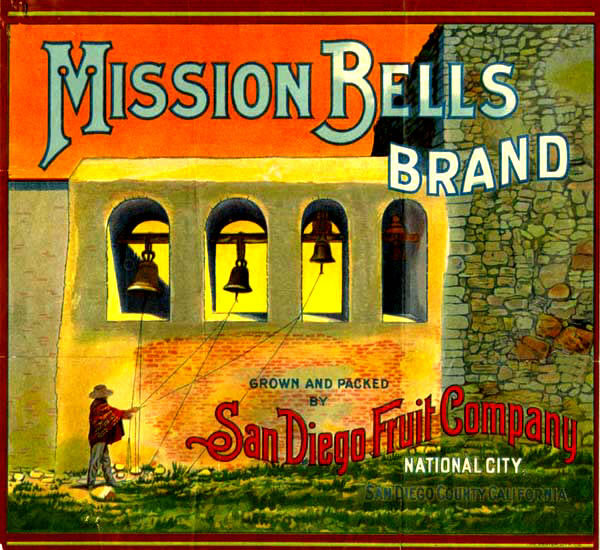
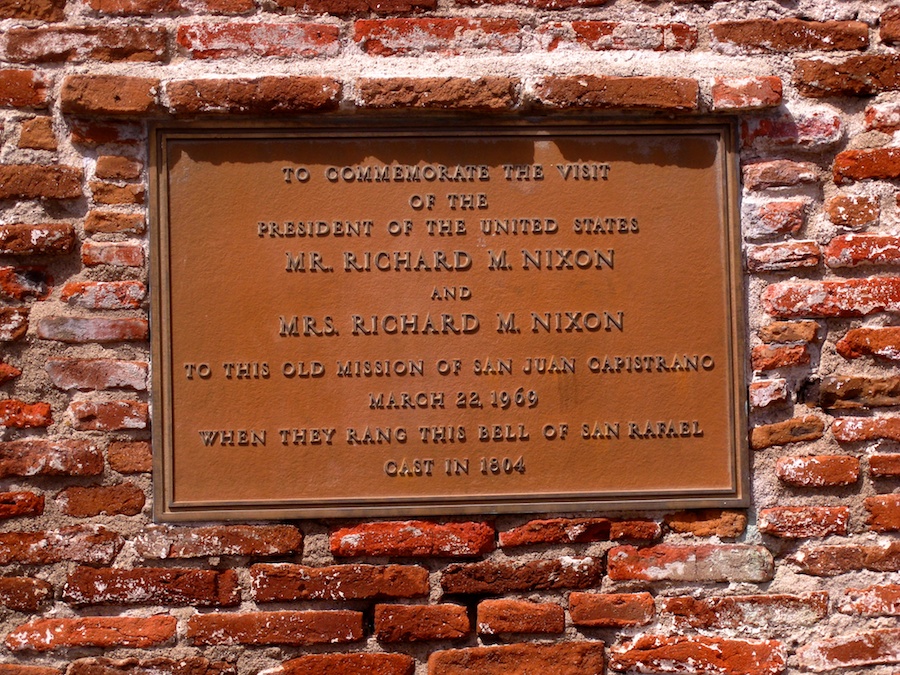
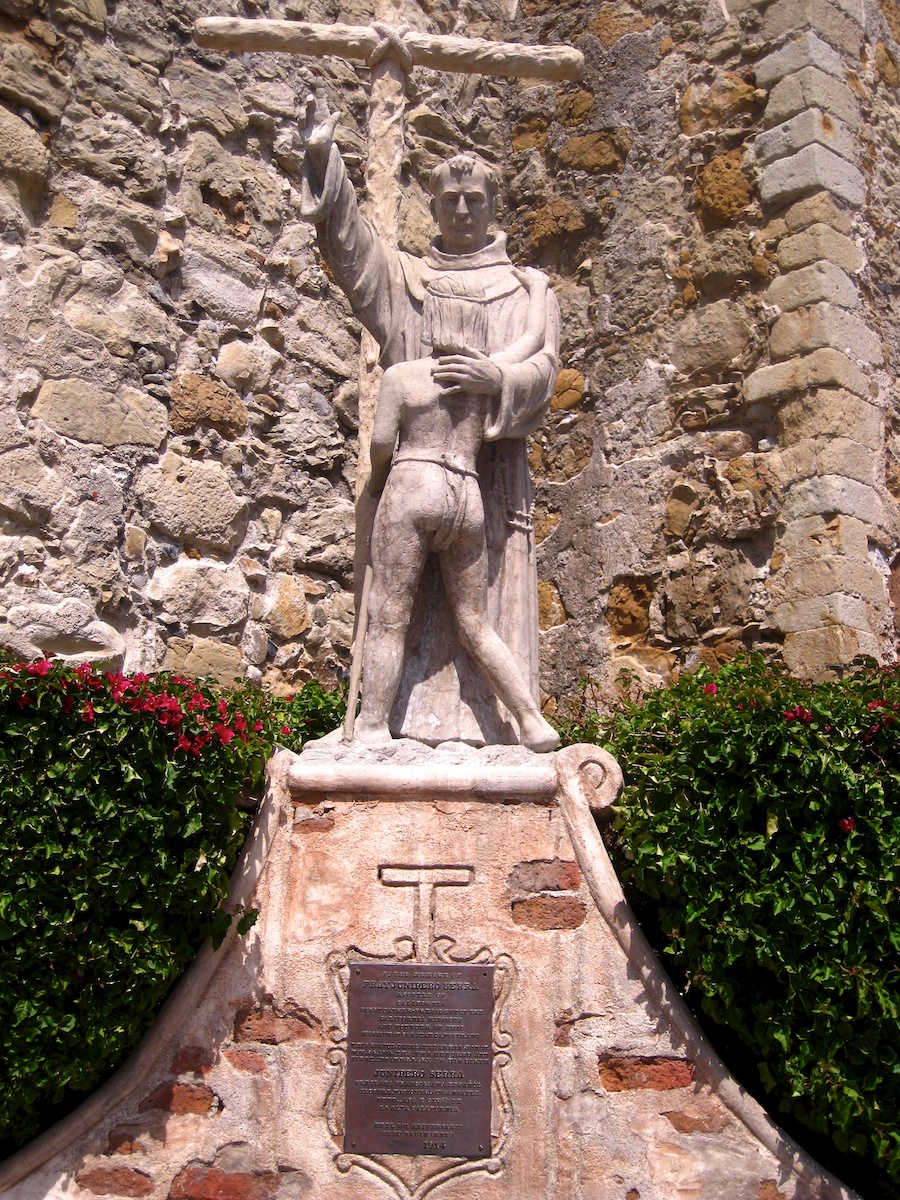
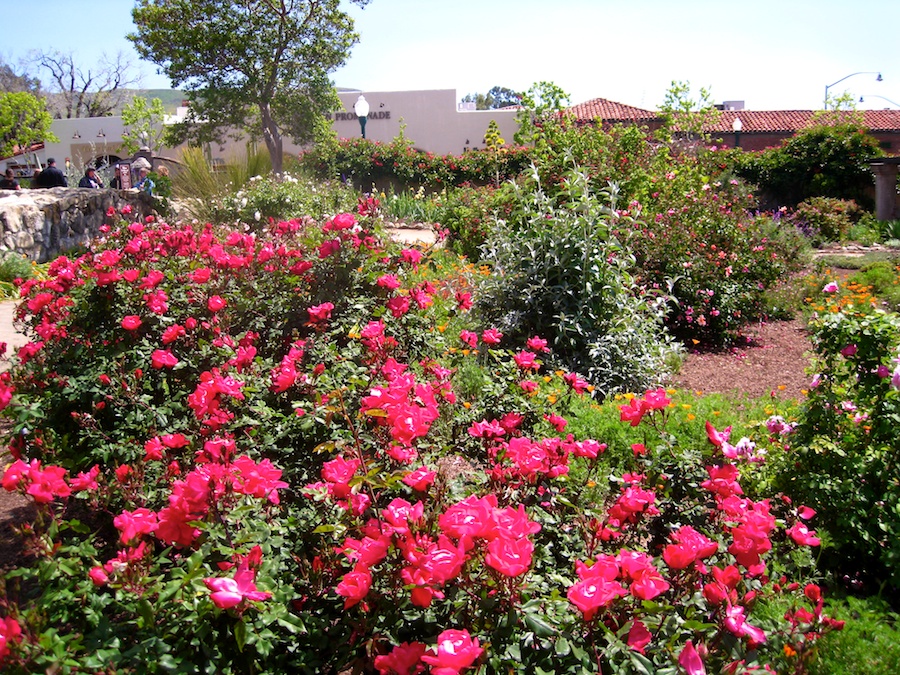
The Great Stone Church
Did You Know? - Work was begun on "The Great Stone Church" (the only chapel building in Alta California not constructed out of adobe) on February 2, 1797. It was laid out in the shape of a cross, measuring 180 feet (55 m) long by 40 feet (12 m) wide with 50-foot (15 m) high walls, and included a 120-foot (37 m) tall campanile (bell tower) located adjacent to the main entrance.
Local legend has it that the tower could be seen for ten miles (16 km) or more, and that the bells could be heard from even farther away. The sandstone building sat on a foundation seven feet thick. Construction efforts required the participation of the entire neophyte population. Stones were quarried from gullies and creek beds up to six miles (10 km) away and transported in carts (carretas) drawn by oxen, carried by hand, and even dragged to the building site.
Limestone was crushed into a powder on the Mission grounds to create a mortar that was more erosion-resistant than the actual stones. On the afternoon of November 22, 1800, tremors from the 6.5-magnitude San Diego Earthquake cracked the walls of the rising edifice, necessitating that repair work be performed.
Unfortunately, Señor Aguilár died six years into the project; his work was carried on by the padres and their charges, who made their best attempts to emulate the existing construction. Lacking the skills of a master mason, however, led to irregular walls and necessitated the addition of a seventh roof dome. The church was finally completed in 1806, and blessed by Fray Estévan Tapís on the evening of September 7; a two-day long fiesta followed
The sanctuary floors were paved with diamond-shaped tiles, and brick-lined niches displayed the statues of various saints. It was by all accounts the most magnificent in all of California and a three-day feast was held in celebration of this monumental achievement. Tragedy struck the settlement when on the morning of December 8, 1812, the "Feast Day of the Immaculate Conception of the Blessed Virgin", a series of massive earthquakes shook Southern California during the first Sunday service.
The 7.0-magnitude Wrightwood Earthquake[50] racked the doors to the church, pinning them shut. When the ground finally stopped shaking, the bulk of the nave had come crashing down, and the bell tower was completely obliterated. Forty native worshipers who were attending mass and two boys who had been ringing the bells in the tower were buried under the rubble and lost their lives, and were subsequently interred in the Mission cemetery.
This was the second major setback the outpost had suffered, and followed severe storms and flooding that had damaged Mission buildings and ruined crops earlier in the year.
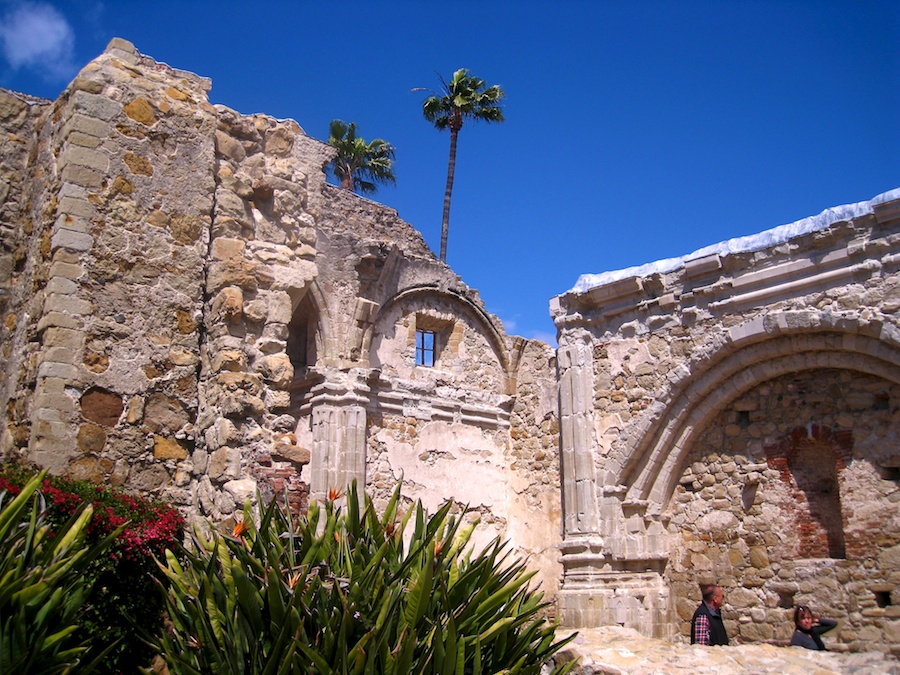
The tower could be seen for miles
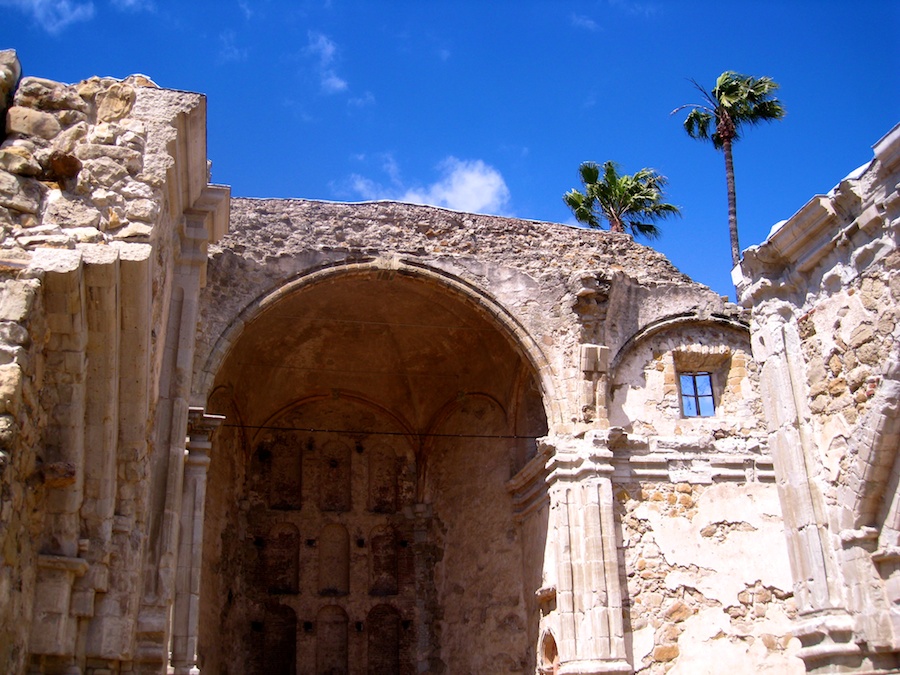
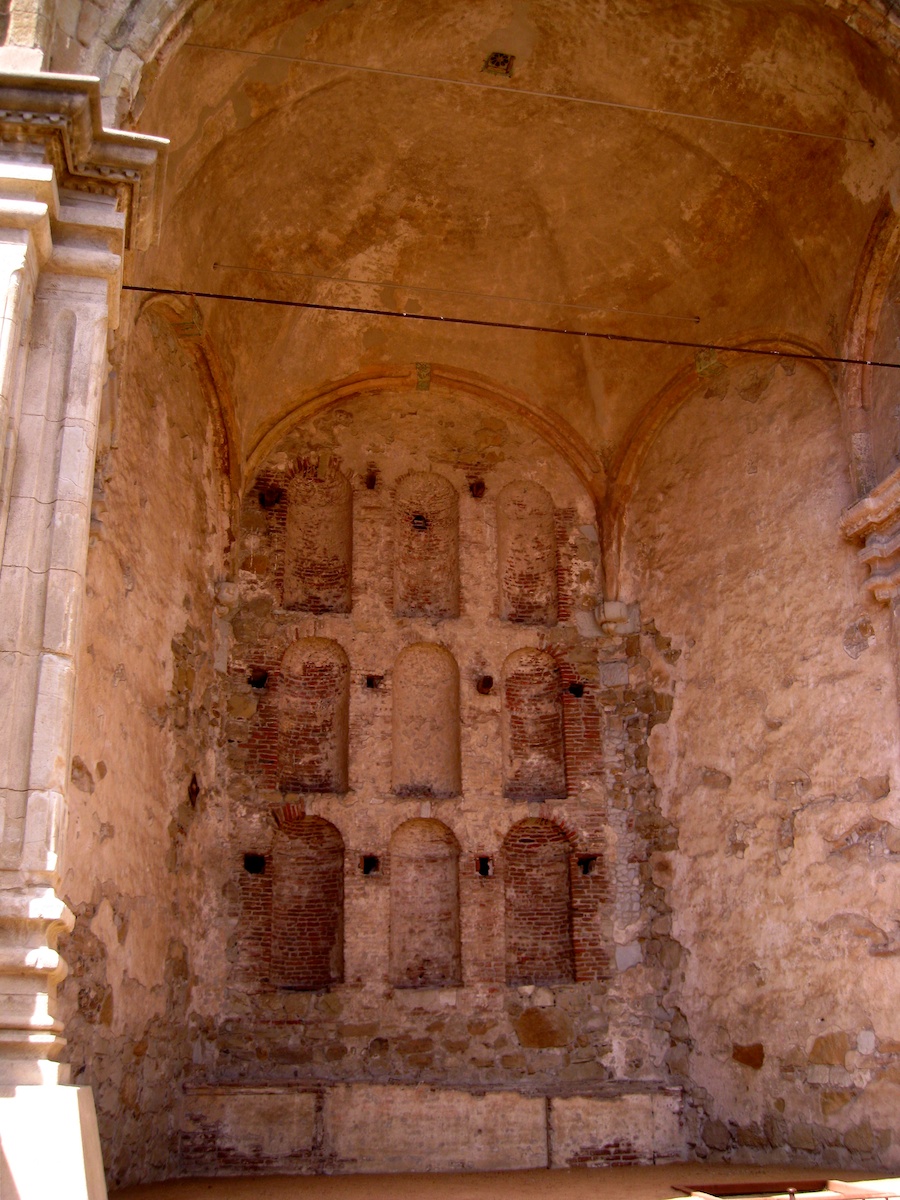

They were at the top of the steeple once upon a time

The Old Meets The New
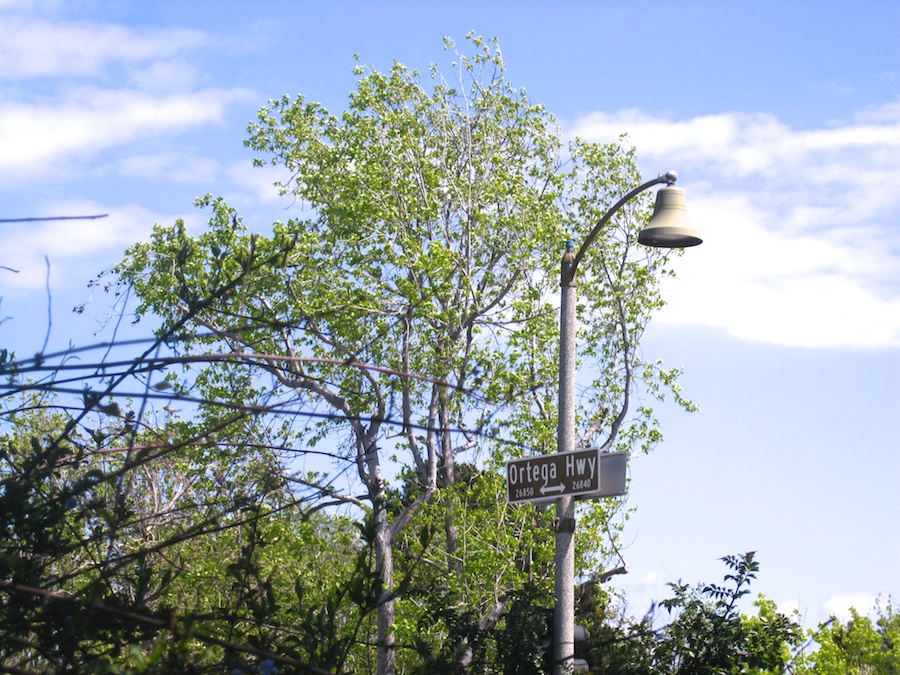
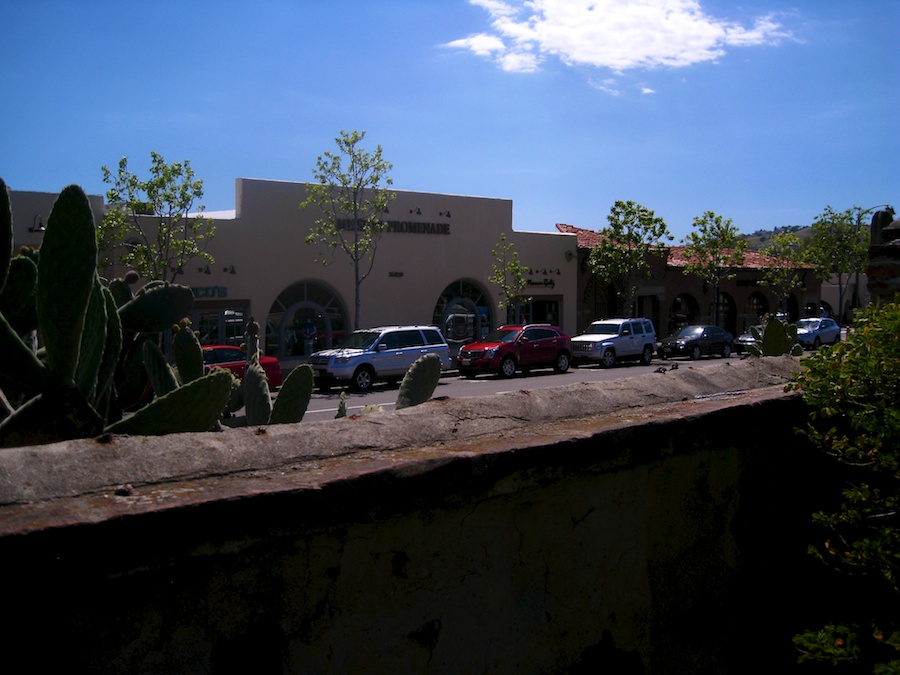
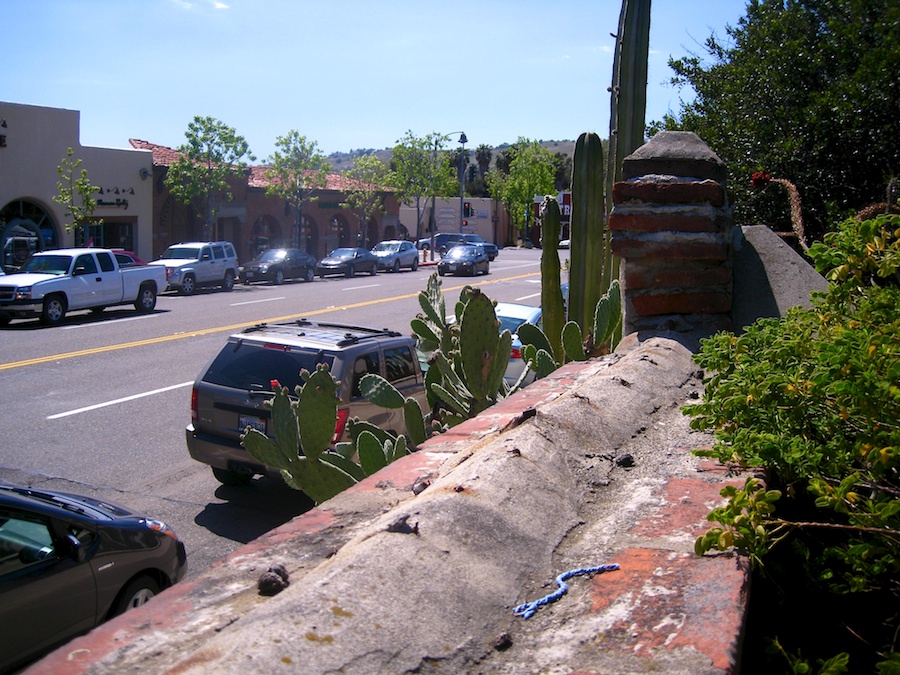


The plaza was magnificent this fine day


Time For A Drink
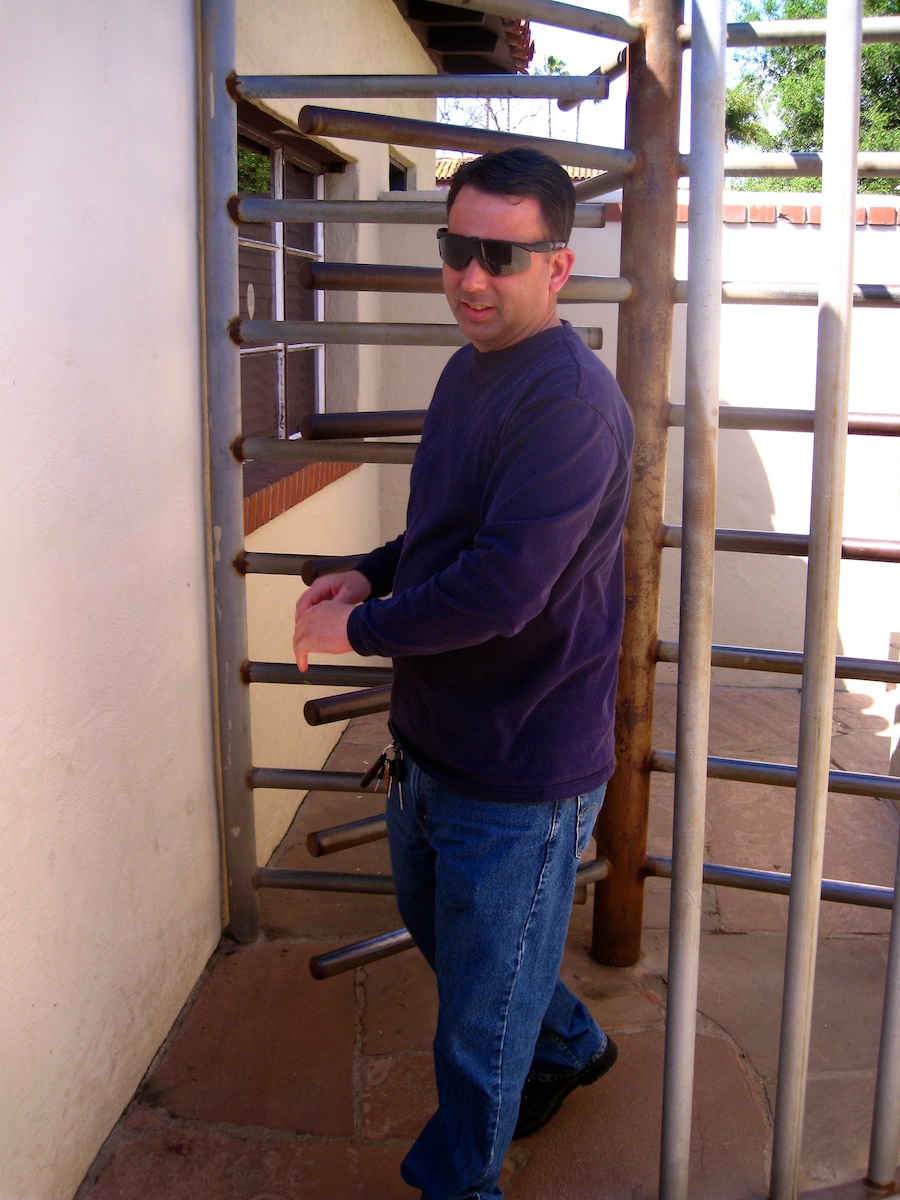
Let me out!!
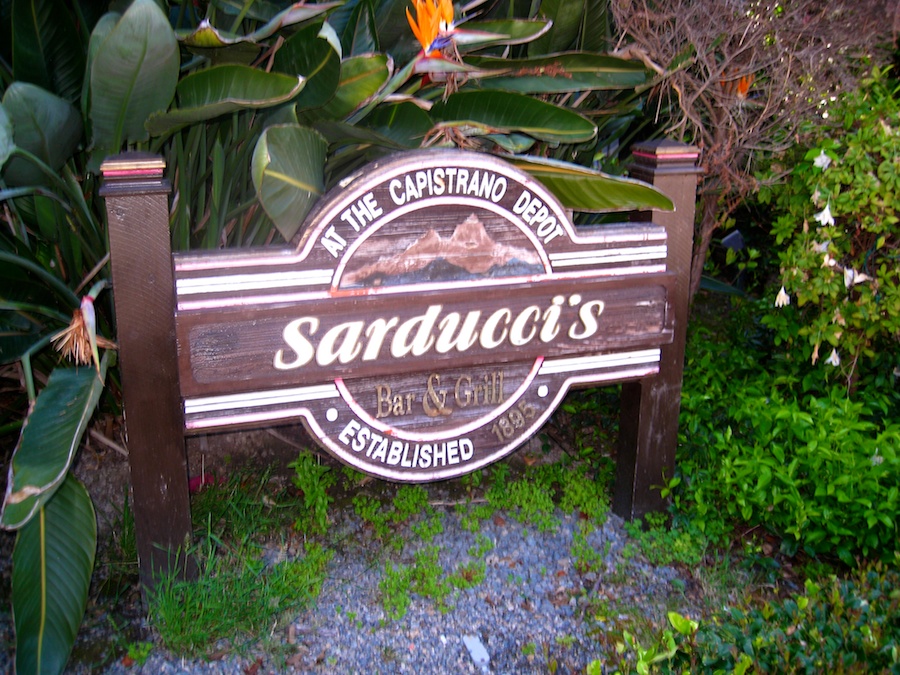
Ah ha... We can smell wine a mile away
Did You Know? - One of the more outstanding features of our beautiful San Juan Capistrano is the train depot. It was completed October 8, 1894 and was written that: "Old San Juan will soon blossom with the finest depot on the Santa Fe system. We invite the architecturalistic to come view this unique building illustrated with arches, a dome 40 feet high with a mission bell, dainty ticket office and quaint old fashion fireplace that will capture the tenderfoot as he breathes the balmy sea air." The statement was by columnist Dr. Alexander Hamilton Rowan on April 14, 1894 in the Santa Ana Standard, a weekly paper.
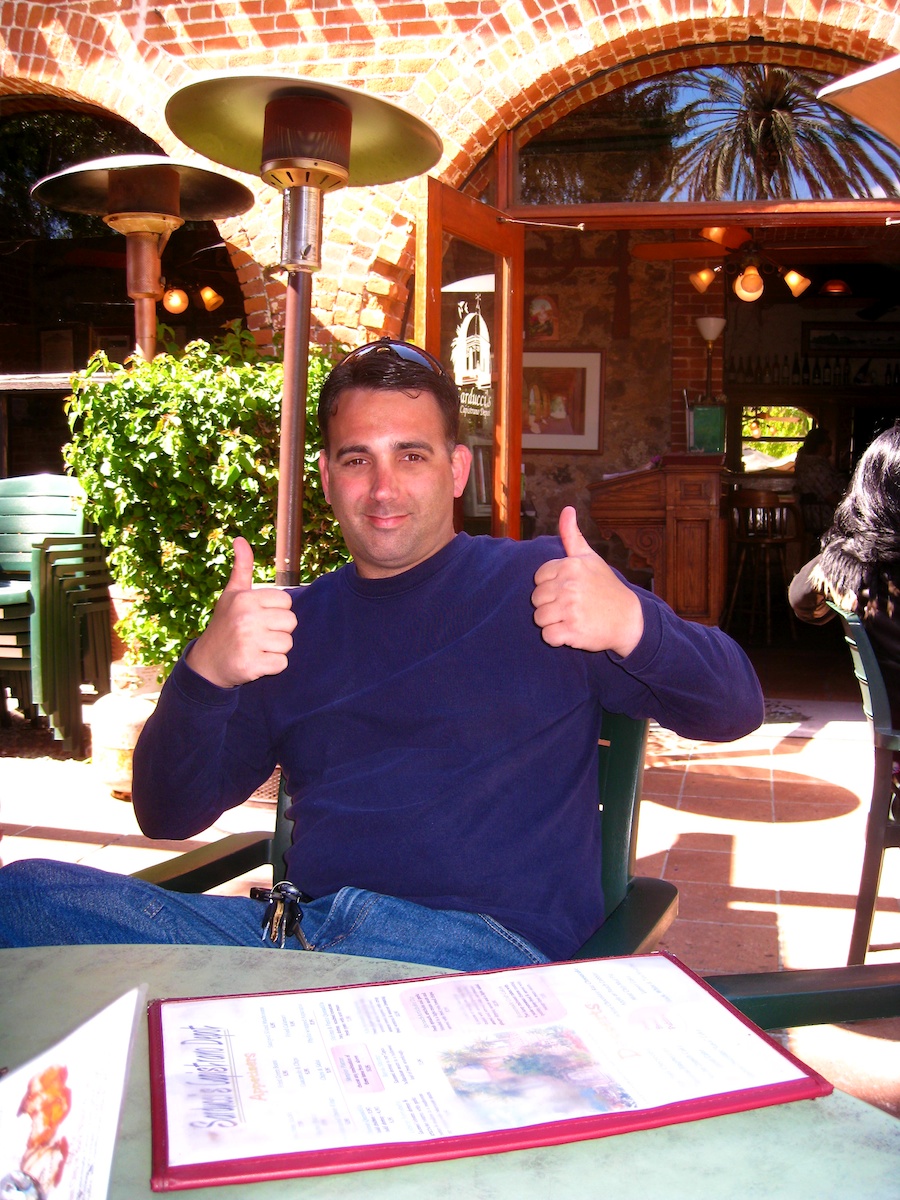
Pete enjoyed the afternoon
Did You Know? - The Capistrano Depot is home to Sarducci's, a long standing town favorite located at the South end below the dome. Offering excellent cuisine in the most beautiful of historic settings, Sarducci's gives diners a choice of outside patio dining or an inside fireside table. Brick archways and an incredible art gallery add to the wonderful ambiance of this restaurant.
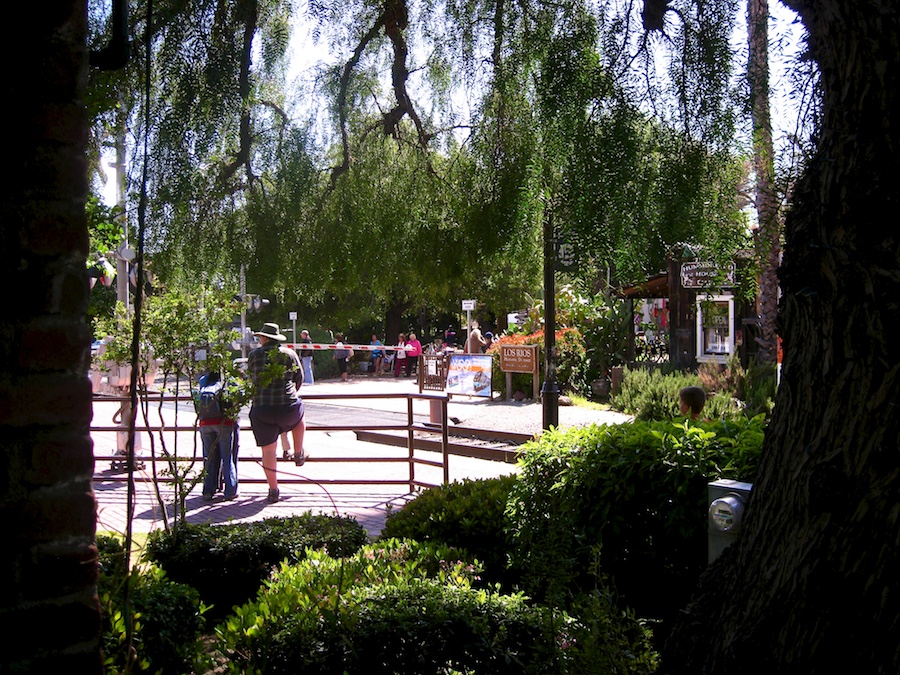
We heard the train
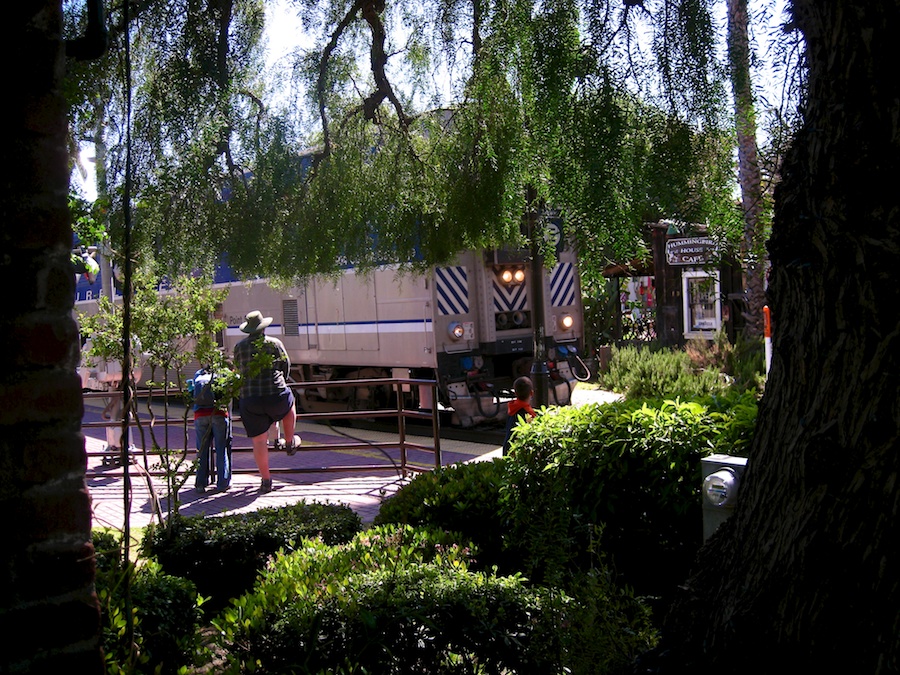
Here it comes
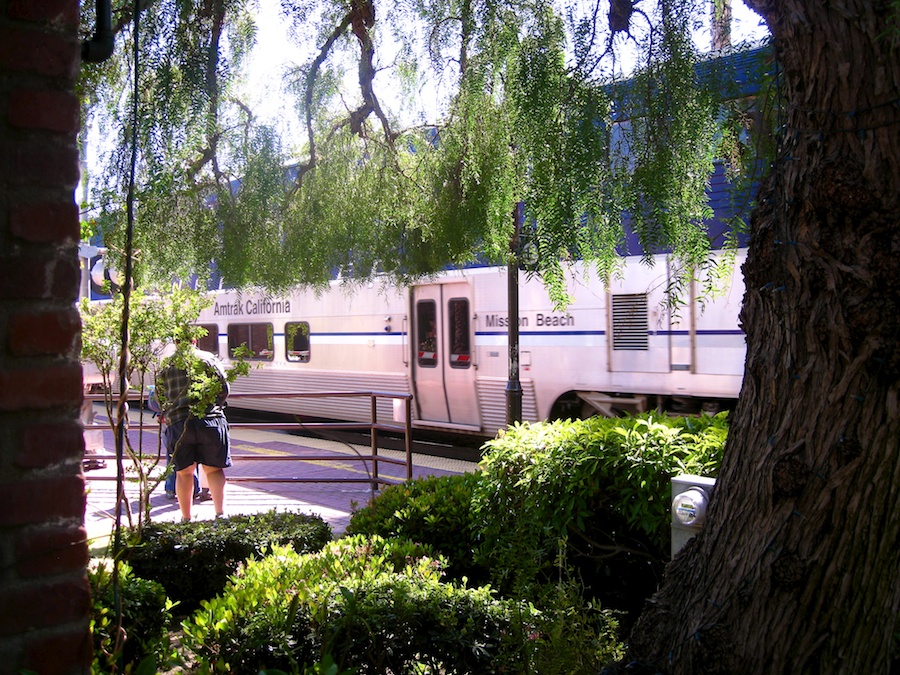
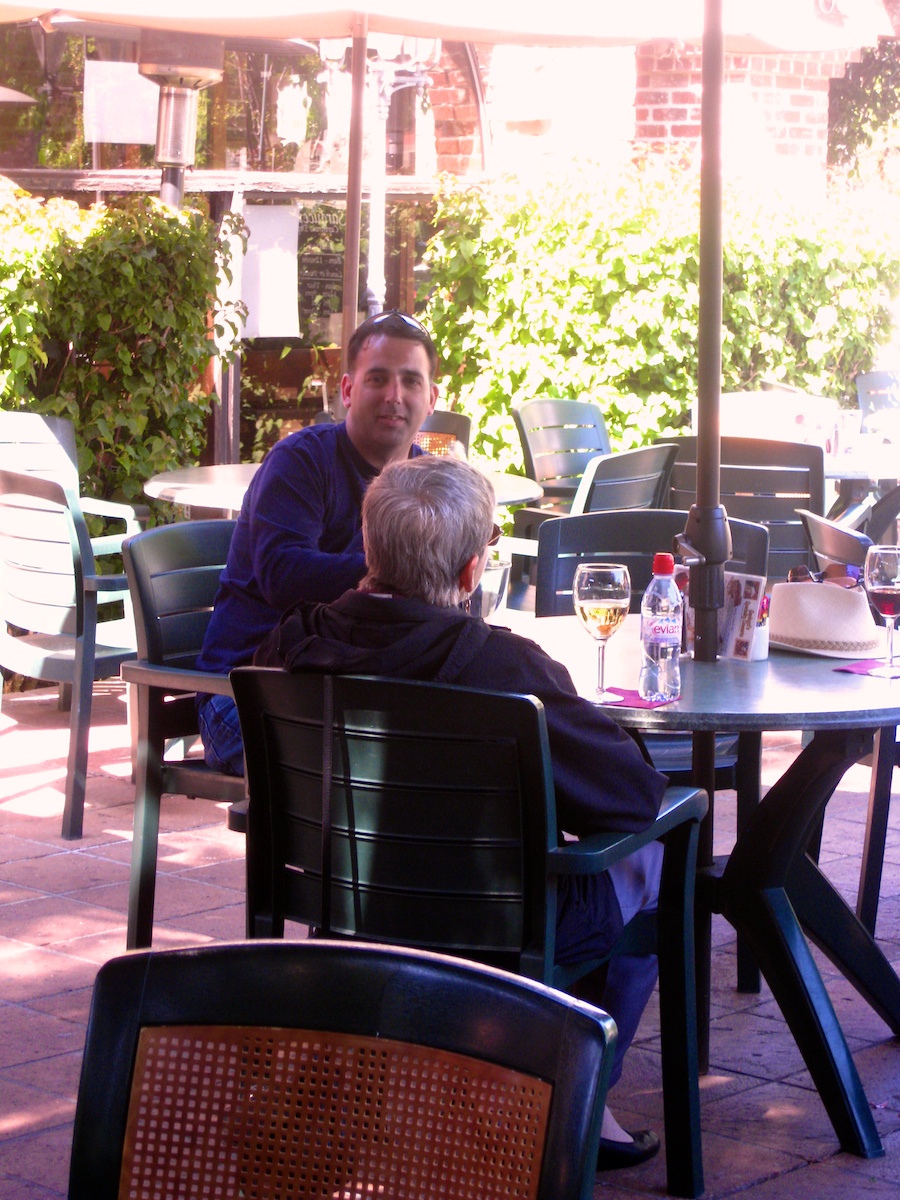
Time to relax
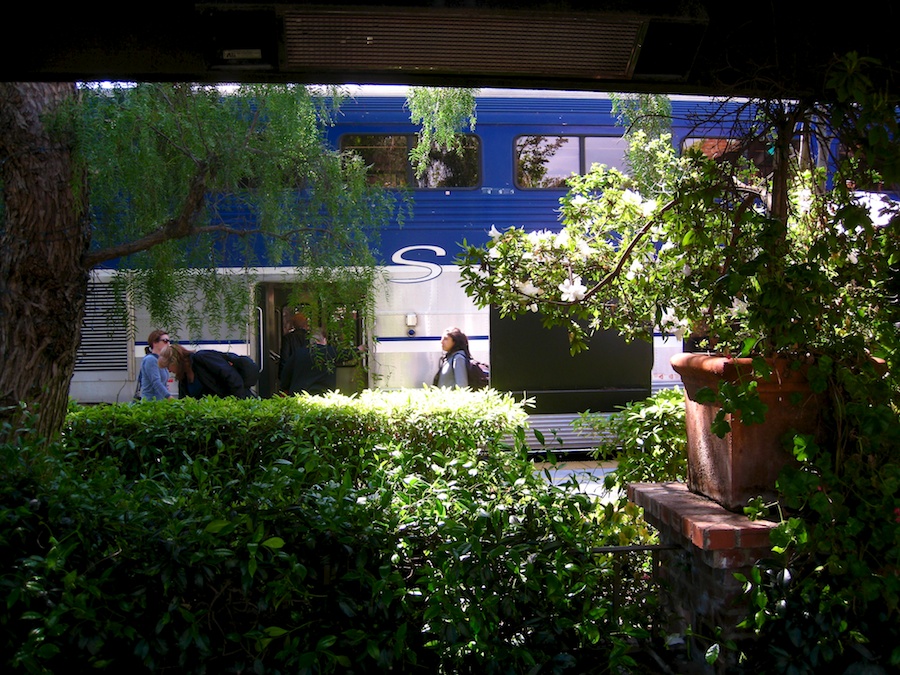
All aboard